March 21st, 2024 - Trip to La Fortuna
In the morning, after a final breakfast at the Tortuga Lodge, we were taken back to Caño Blanco by boat. There we changed our means of transportation and were taken to Guapiles by Roy in a minibus. Our rental car, a Mitsubishi Montero 4x4, was waiting for us there:
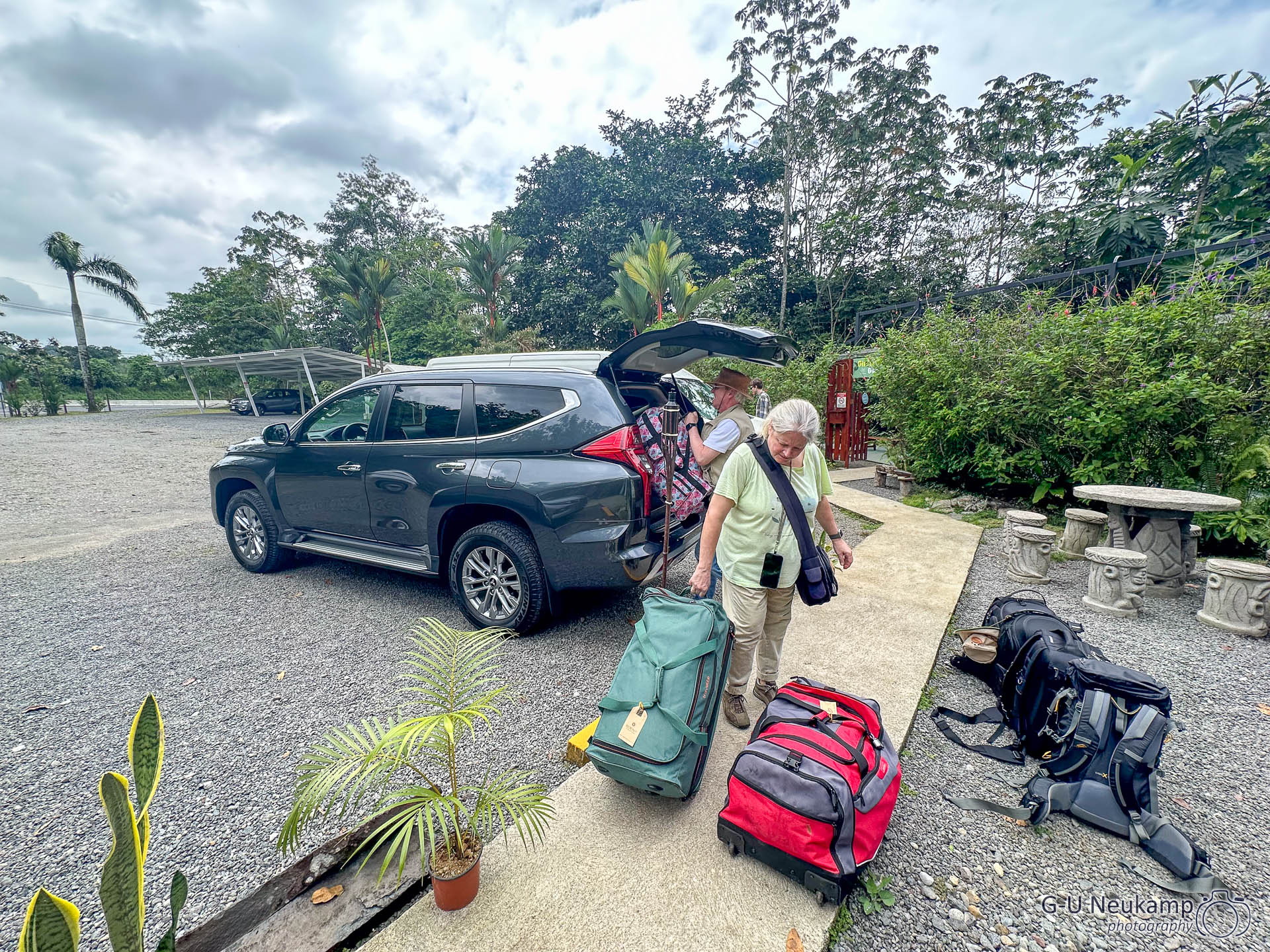
We then took the rental car to our next location near the Arenal volcano in La Fortuna. On the way, it poured with rain.
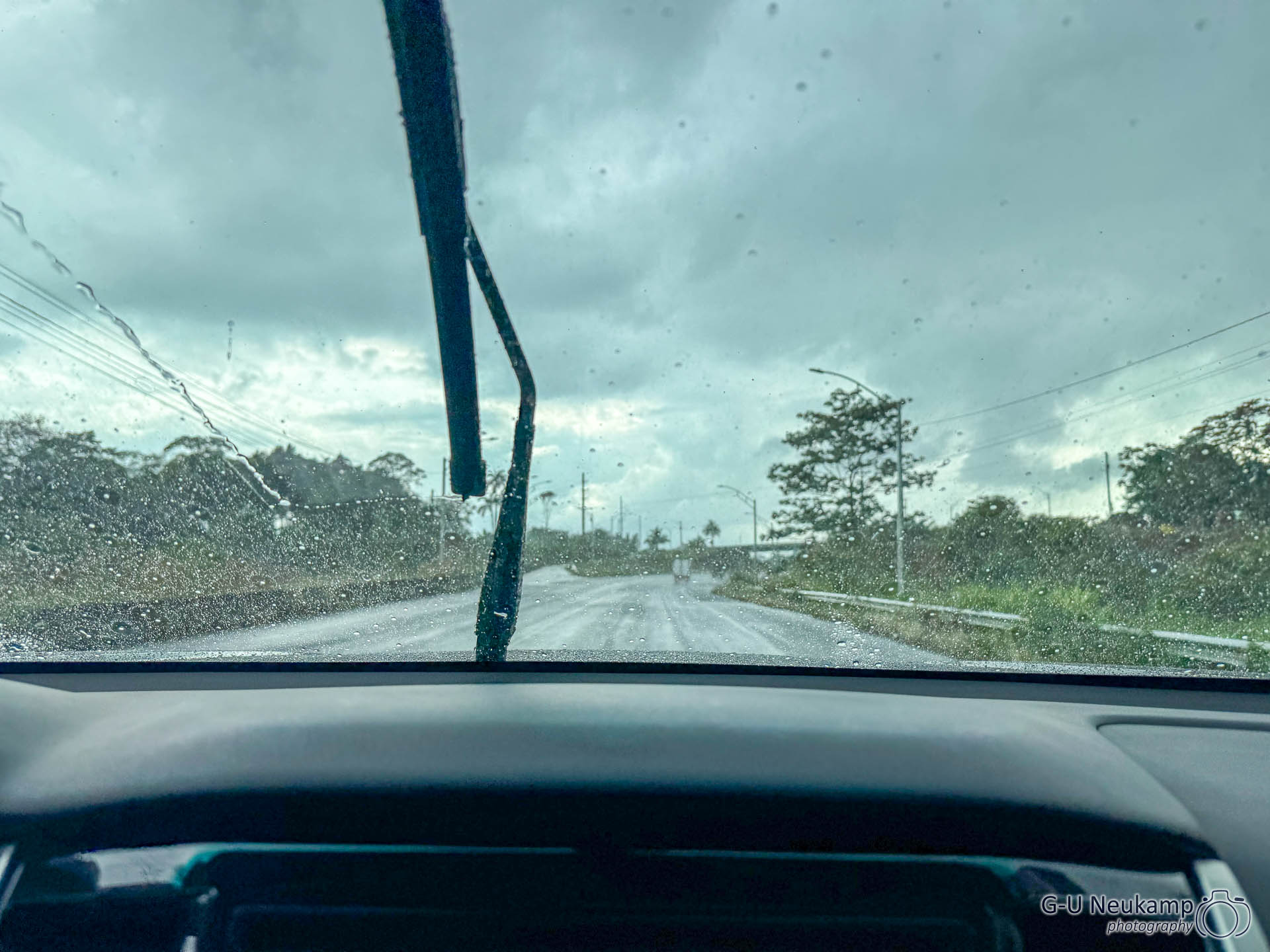
The rainy season in Costa Rica doesn’t actually start until May. But a guide said:
„We have two seasons in Costa Rica - the rainy season and the very rainy season“ 🤣
After a 2 1/2 hour drive at a crawling pace (the maximum speed in Costa Rica is 90km/h, but given the traffic and the condition of the roads, 40-60km/h is more realistic), we reached our next lodge at the Arenal volcano at around 4:20 pm. We stay there for 3 nights.
Our accommodation for the next 3 days was the Amor Arenal Lodge. The complex is, it’s hard to say otherwise, spectacular. We were welcomed at the reception with a refreshing cocktail and after completing the formalities, we were driven to our rooms in an electric vehicle.
The lodge consists of individual guest houses - called Canyon Casitas - with the most luxurious interiors. They are situated next to each other on the edge of a canyon with a view of the rainforest in the canyon and the Arenal volcano behind it. Each casita has its own jacuzzi.
As expected from a proper volcano, the Arenal was initially hidden behind clouds.
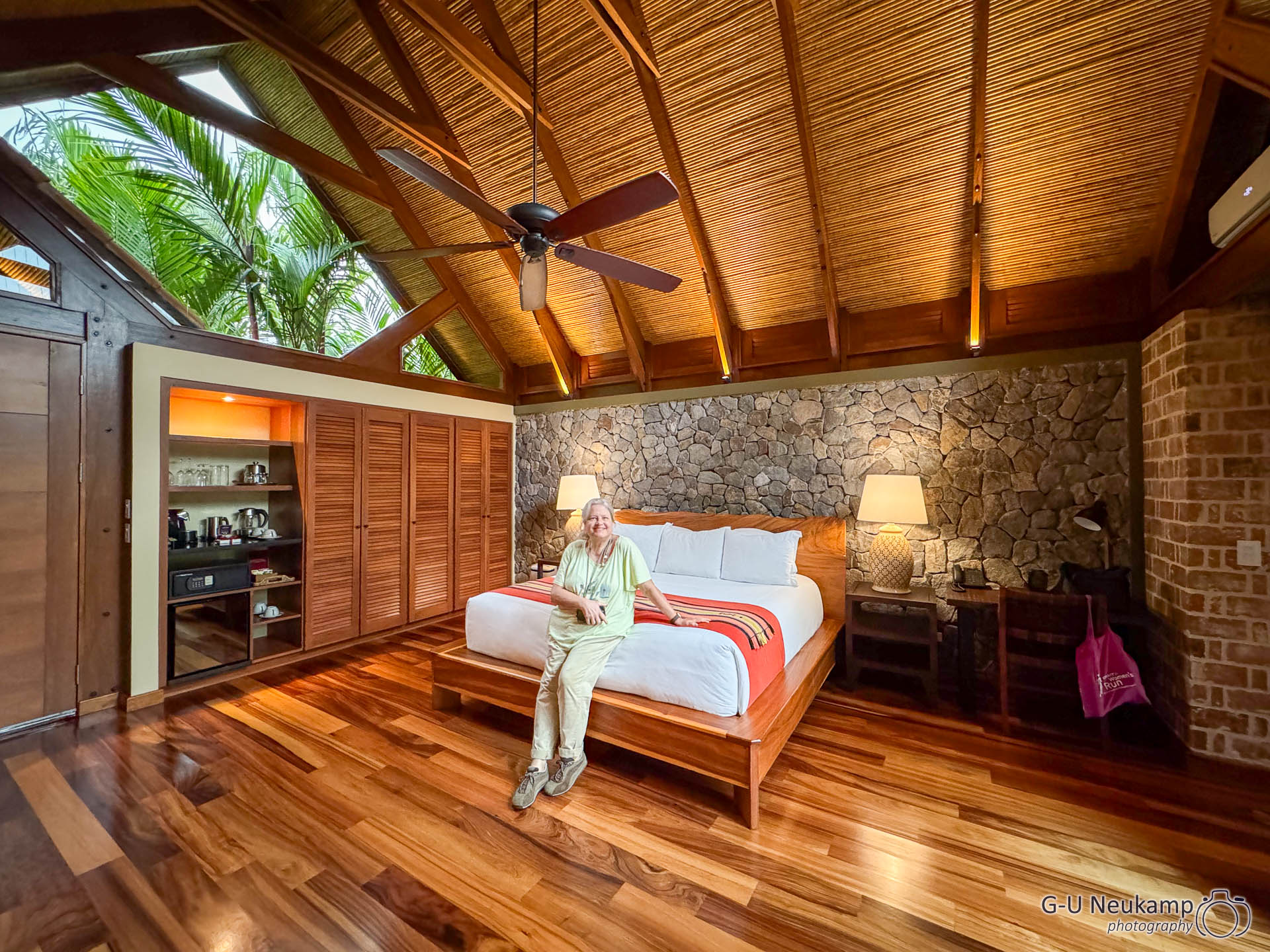
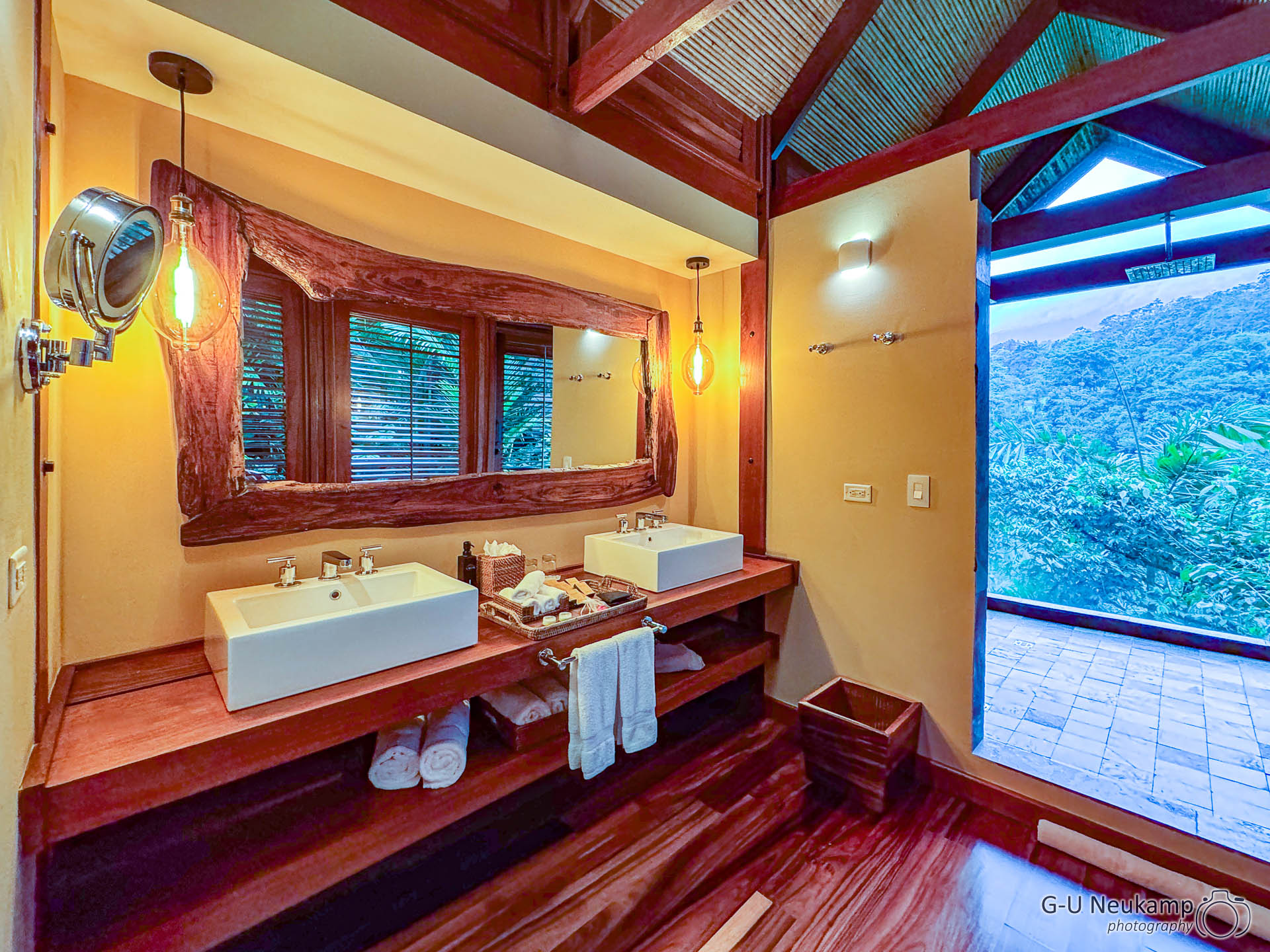
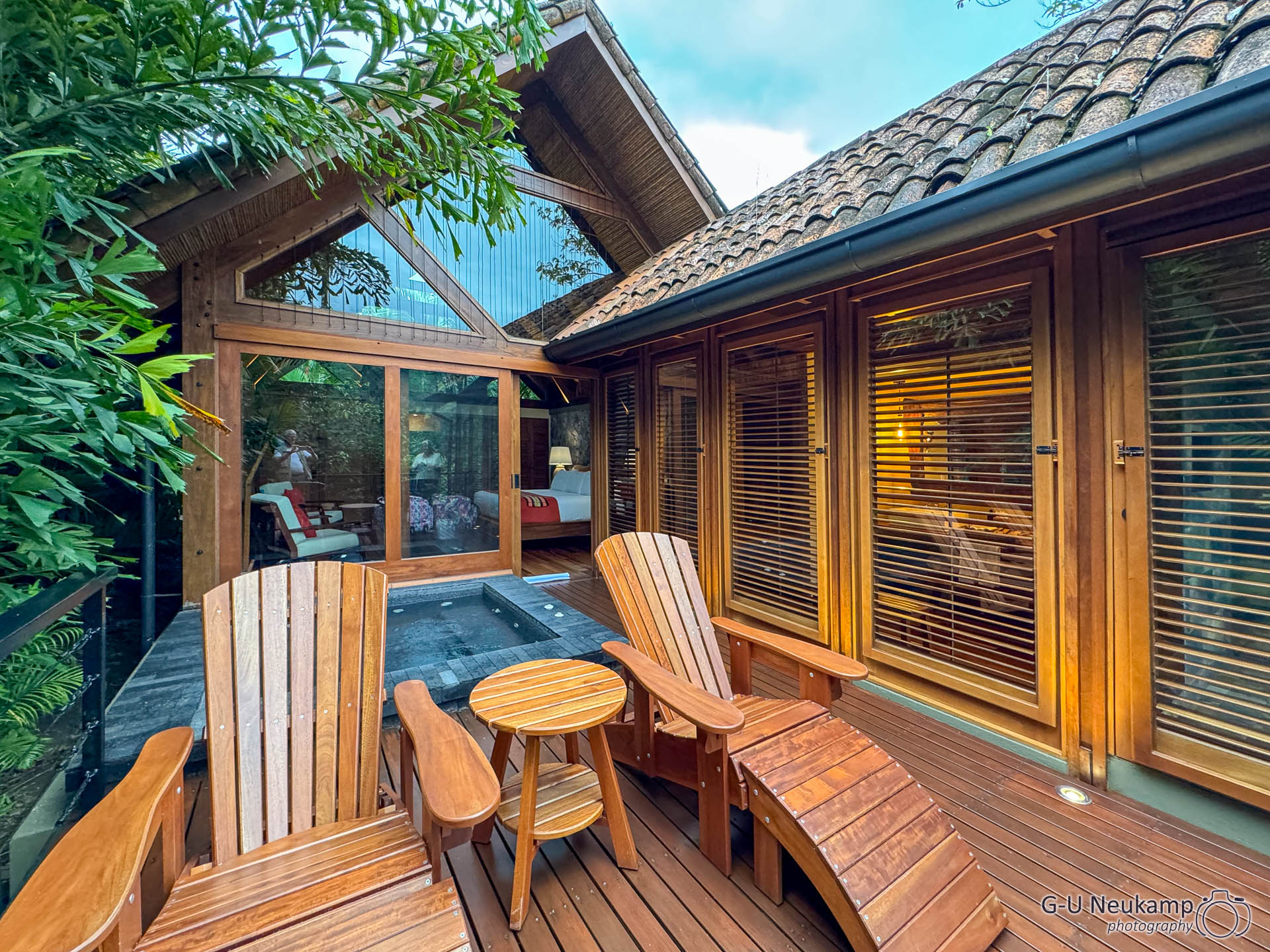
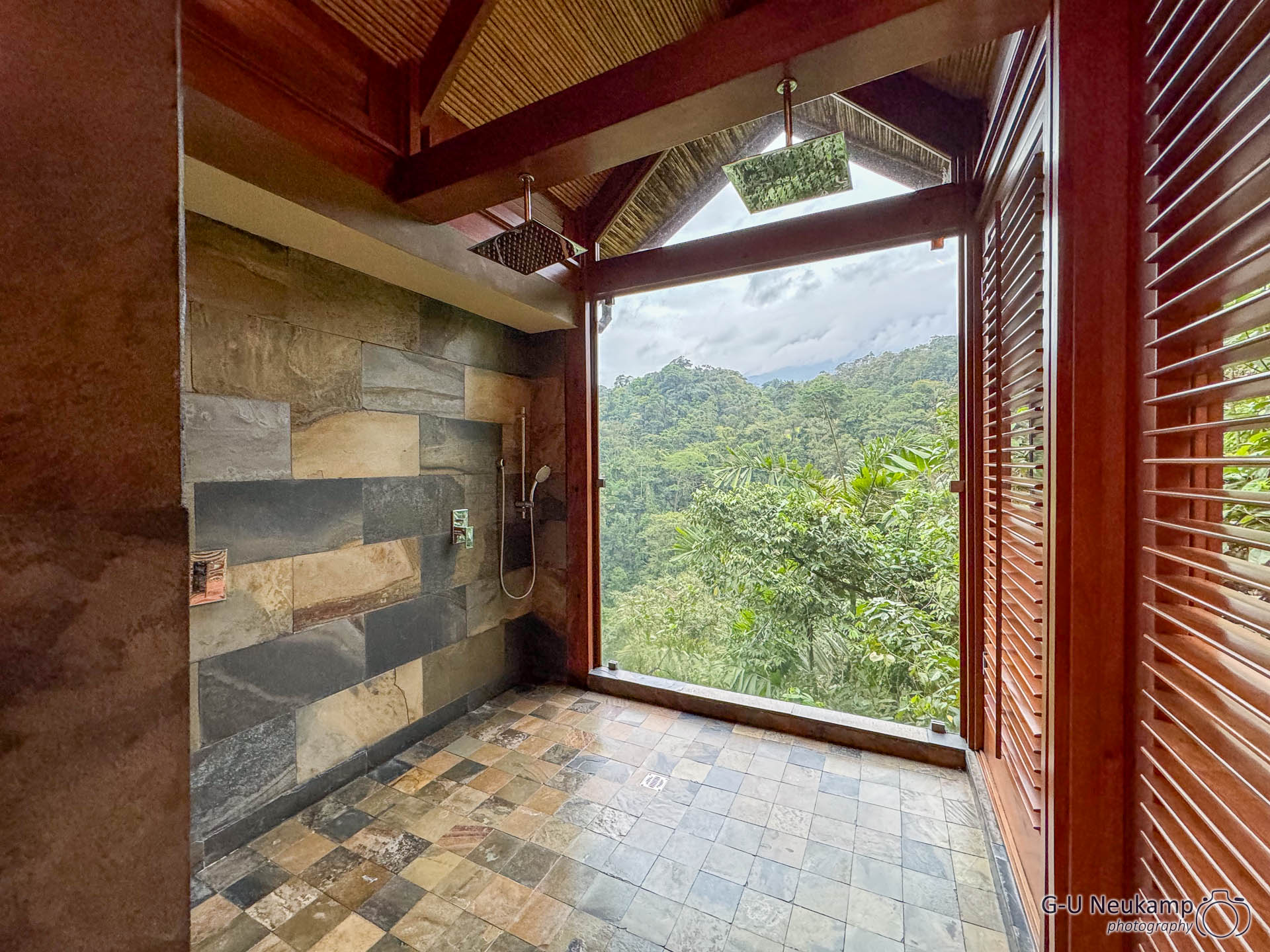
First of all, we tried out the jacuzzi extensively. Before dinner, we went to the bar and enjoyed a cocktail. There is a barbecue restaurant outside next to the bar where you can cook your own food on a charcoal grill integrated into the table. We found this exciting and booked a table for the day after tomorrow.
In the bar itself, they serve a surprise menu with accompanying drinks, which we booked for the following evening. That evening we went to the main restaurant for an à la carte menu. So the matter of dinner at Amor Arenal was quickly resolved. The dinner in the restaurant was absolutely first class. I had salmon carpaccio, followed by “surf & turf”, accompanied by a very tasty red wine:
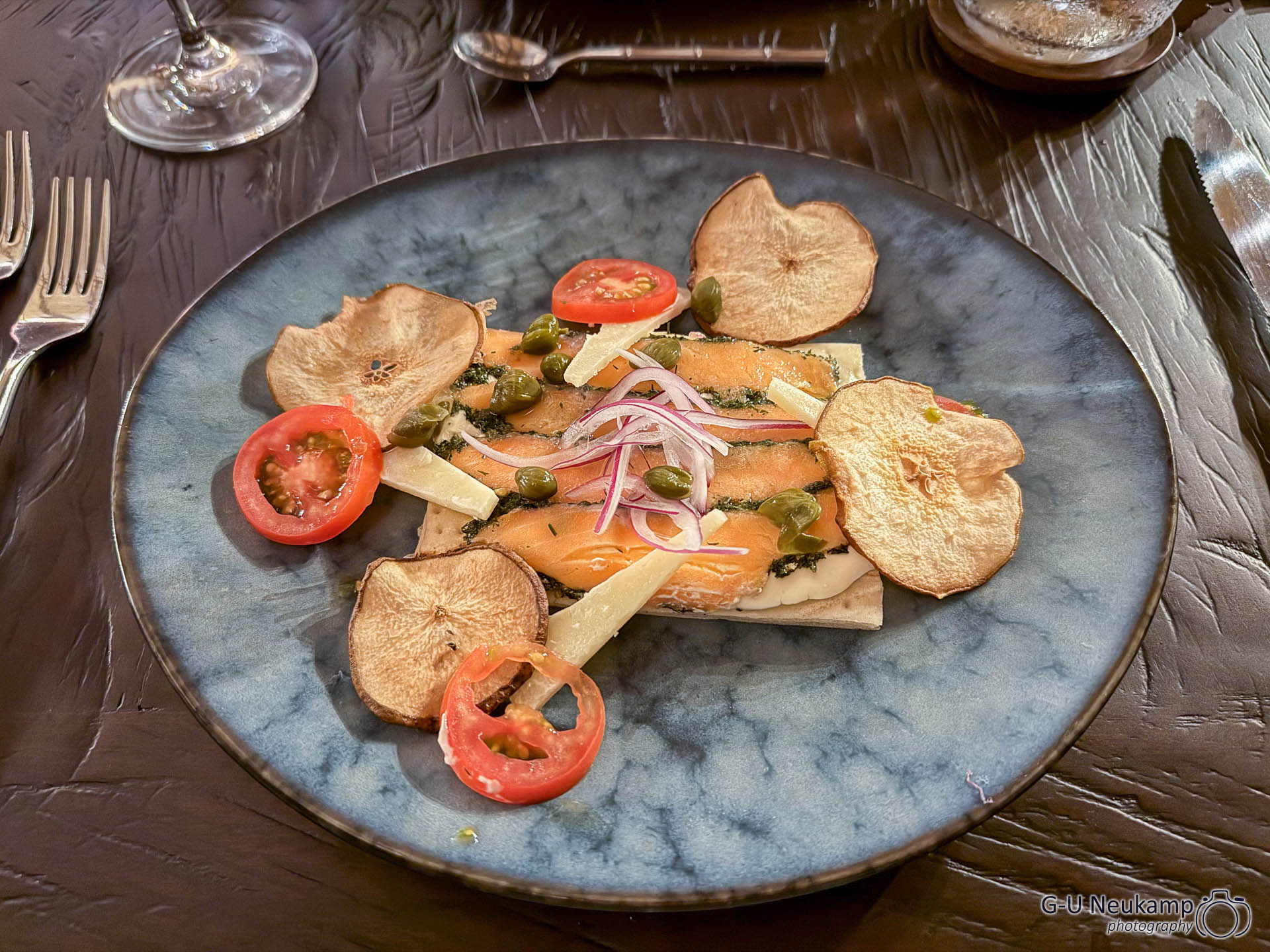
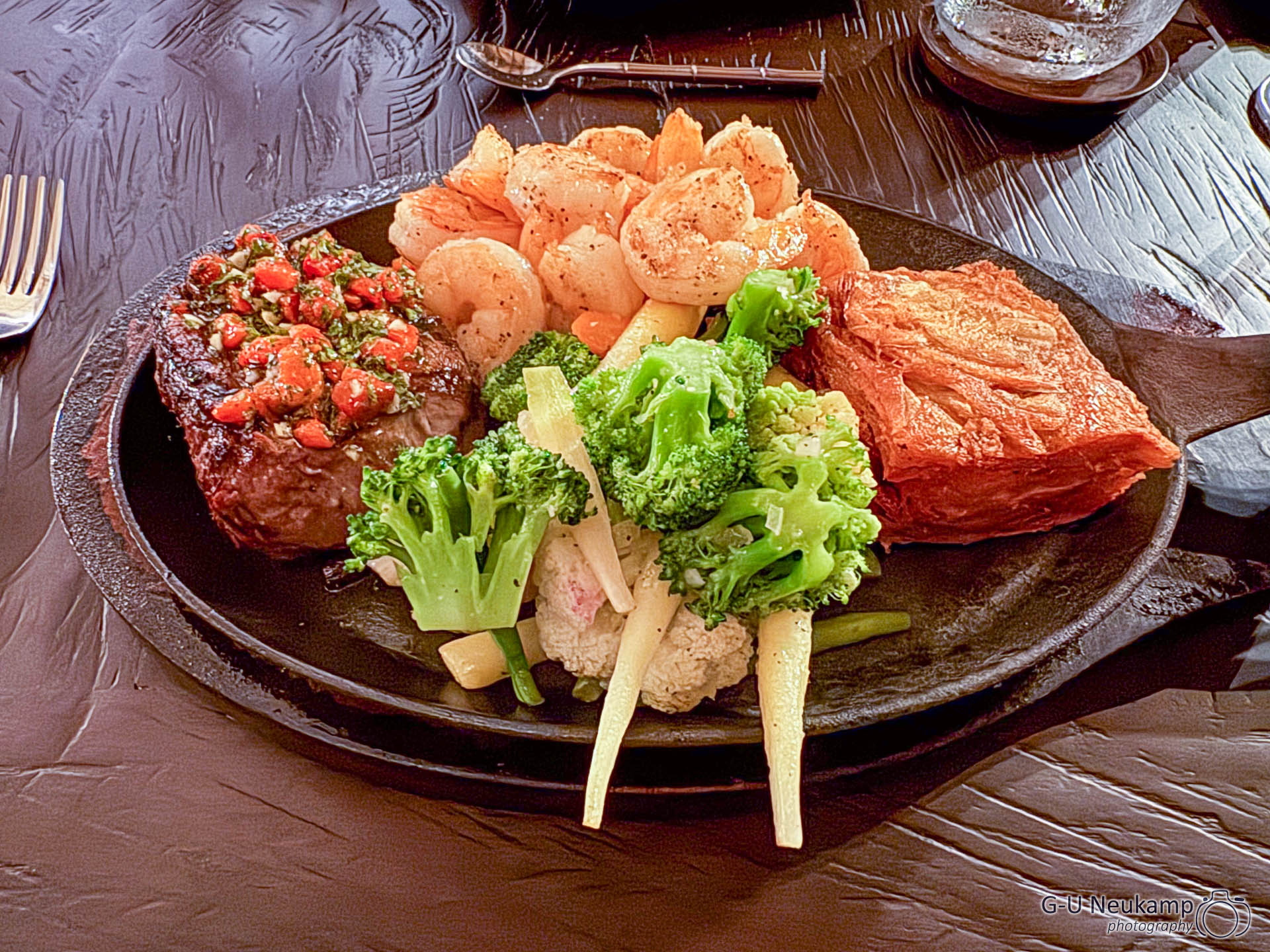
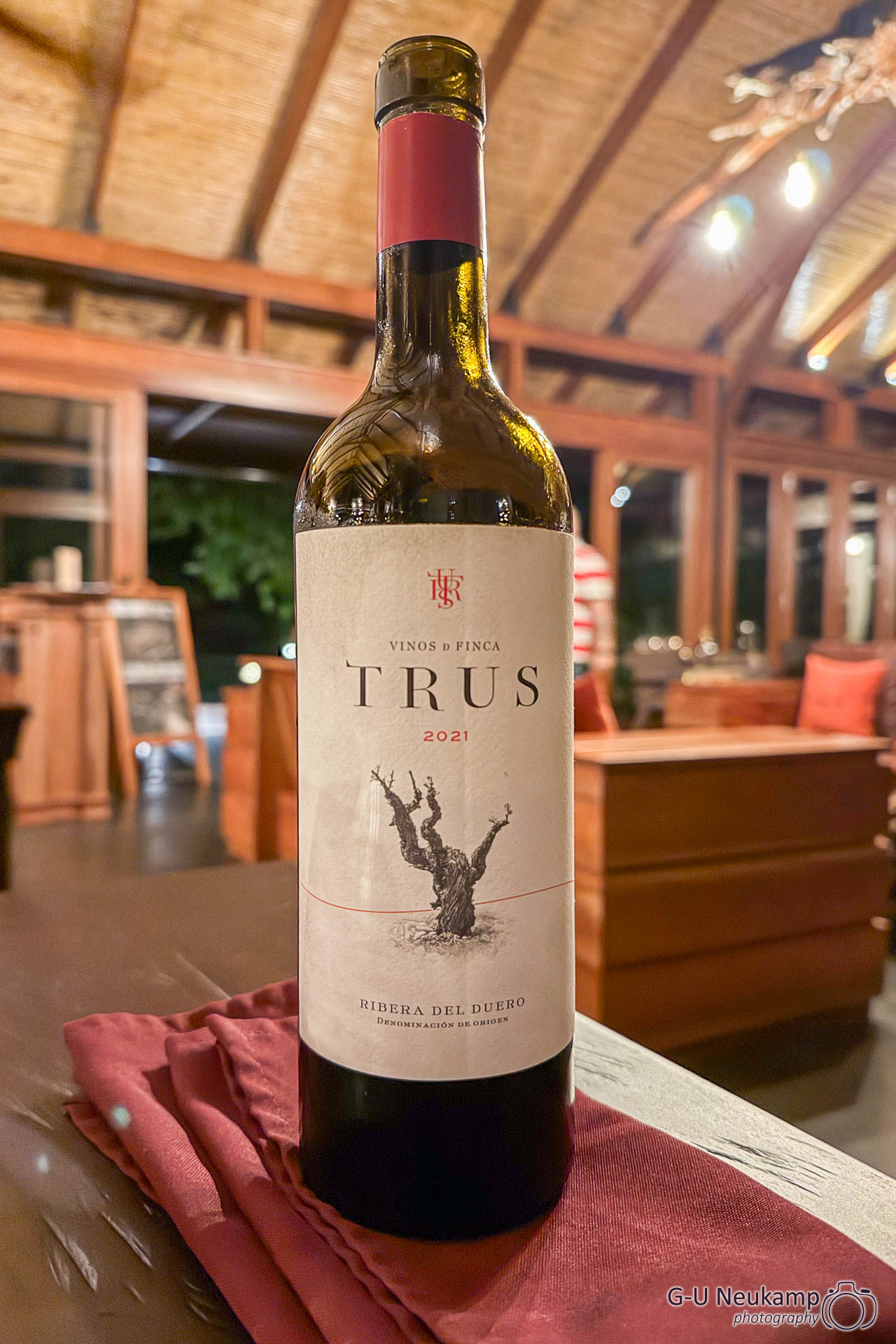
March 22nd, 2024
Looking out of the window in the morning, we saw the Arenal in the most beautiful morning light and immediately took a photo to prove it. Who knows if it will be visible again without clouds ⛅️. (Spoiler: it was).
The Arenal volcano is one of the most famous and active volcanoes in Costa Rica. It is located in the north of the country, near the city of La Fortuna, and rises majestically to a height of around 1,670 meters above sea level. Arenal was the most active volcano in Costa Rica for a long time and erupted regularly, resulting in spectacular lava flows and ash clouds. Since 2010, however, the volcano has been in a dormant phase and no more major eruptions have been recorded.
The volcano is a cone volcano, known for its perfect, almost symmetrical shape. Surrounding Arenal is Lake Arenal, the largest artificial lake of the country, which plays an important role in power generation. The region around the volcano is a popular tourist destination and offers numerous activities such as hiking, hot springs and wildlife spotting in the surrounding rainforests. The Arenal National Park, in which the volcano is located, is a protected area that preserves the unique flora and fauna of the region.
When we picked up our friends for the scheduled breakfast, the Arenal was still almost cloudless in all its glory. We immediately took the opportunity to launch the drones. However, we quickly received a phone call informing us that we were not allowed to do so.
Afterwards, we realized why: who wants to be photographed in a Jacuzzi or under the panoramic shower? Of course, we didn’t do either, but only took panoramic shots from a great distance:

The 360° panoramic image shows the red roofs of the lodge’s casitas to the left and right. Needless to say, after the call we immediately landed the drones again and went to breakfast.
We then drove to the well-known waterfall of La Fortuna nearby. This falls about 70-75 meters and is located at the foot of the dormant Chato volcano, about 5.5 km outside the town of La Fortuna. It is fed by the Fortuna River, which flows through the rainforest of the Arenal mountain range until it plunges over the cliff and forms this waterfall.
We went down 500 steps from the parking lot and then, of course, up 500 steps again. It was an impressive location. Here is an overview plan of the site and some pictures of the “descent”:
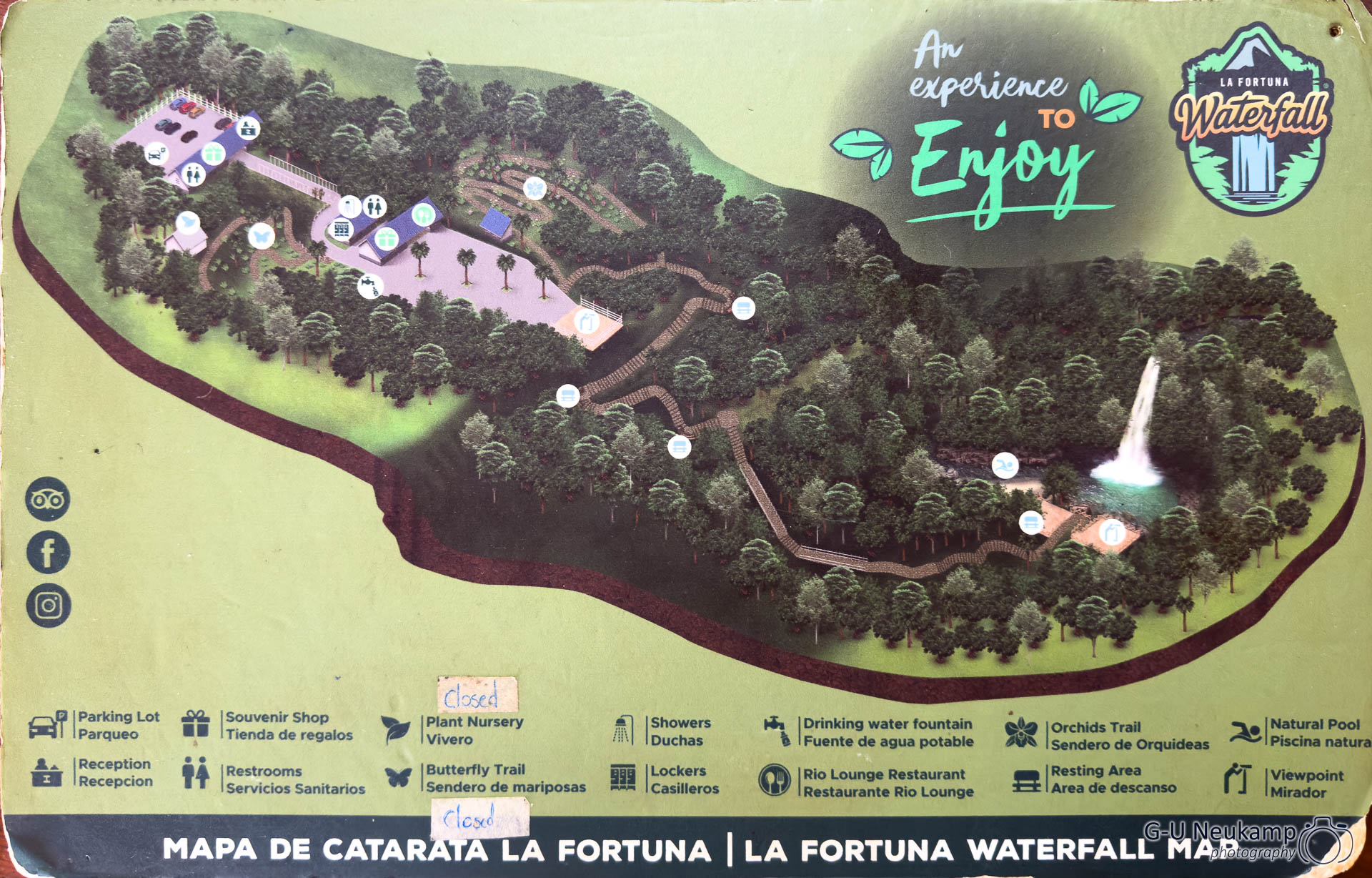
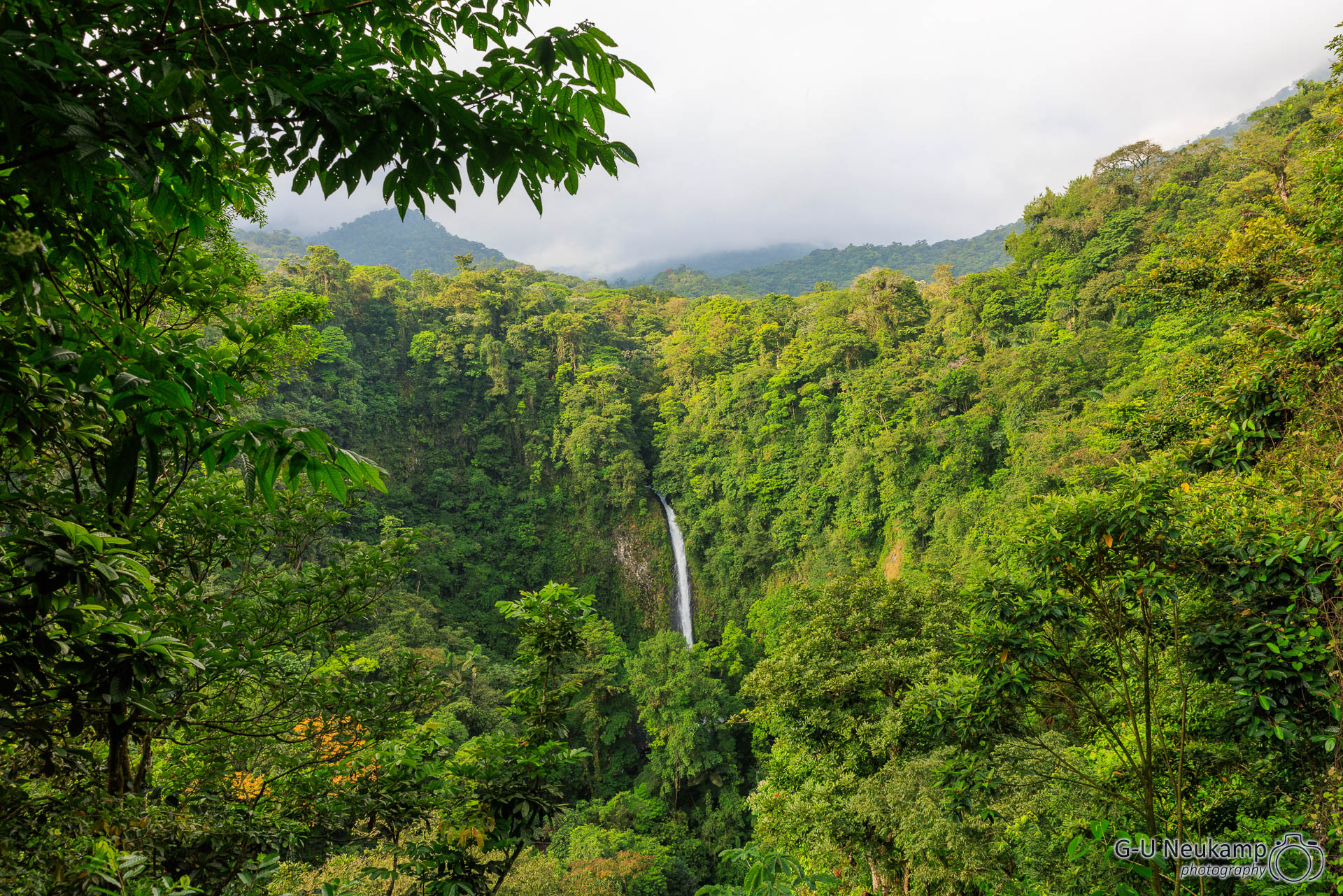
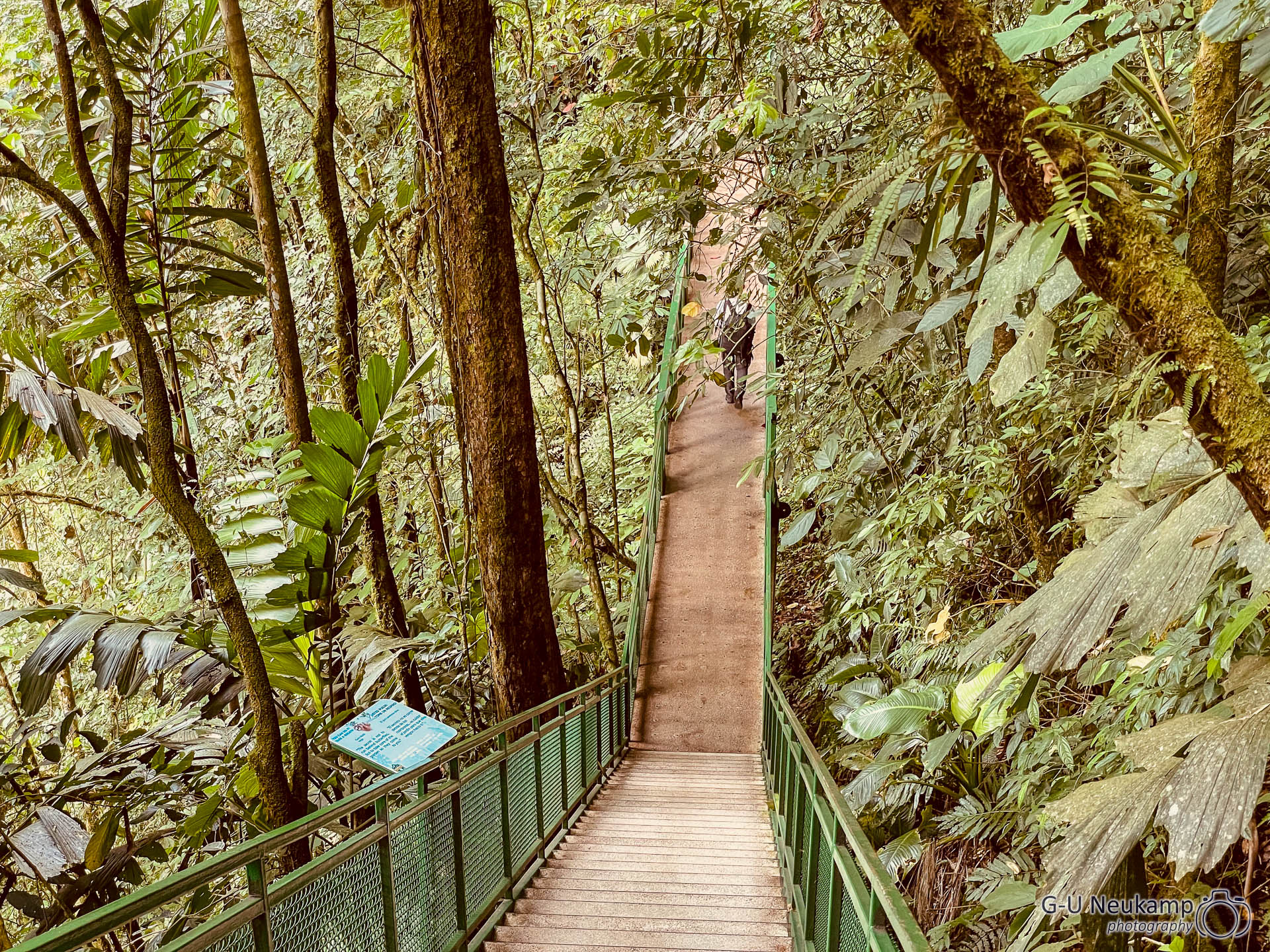
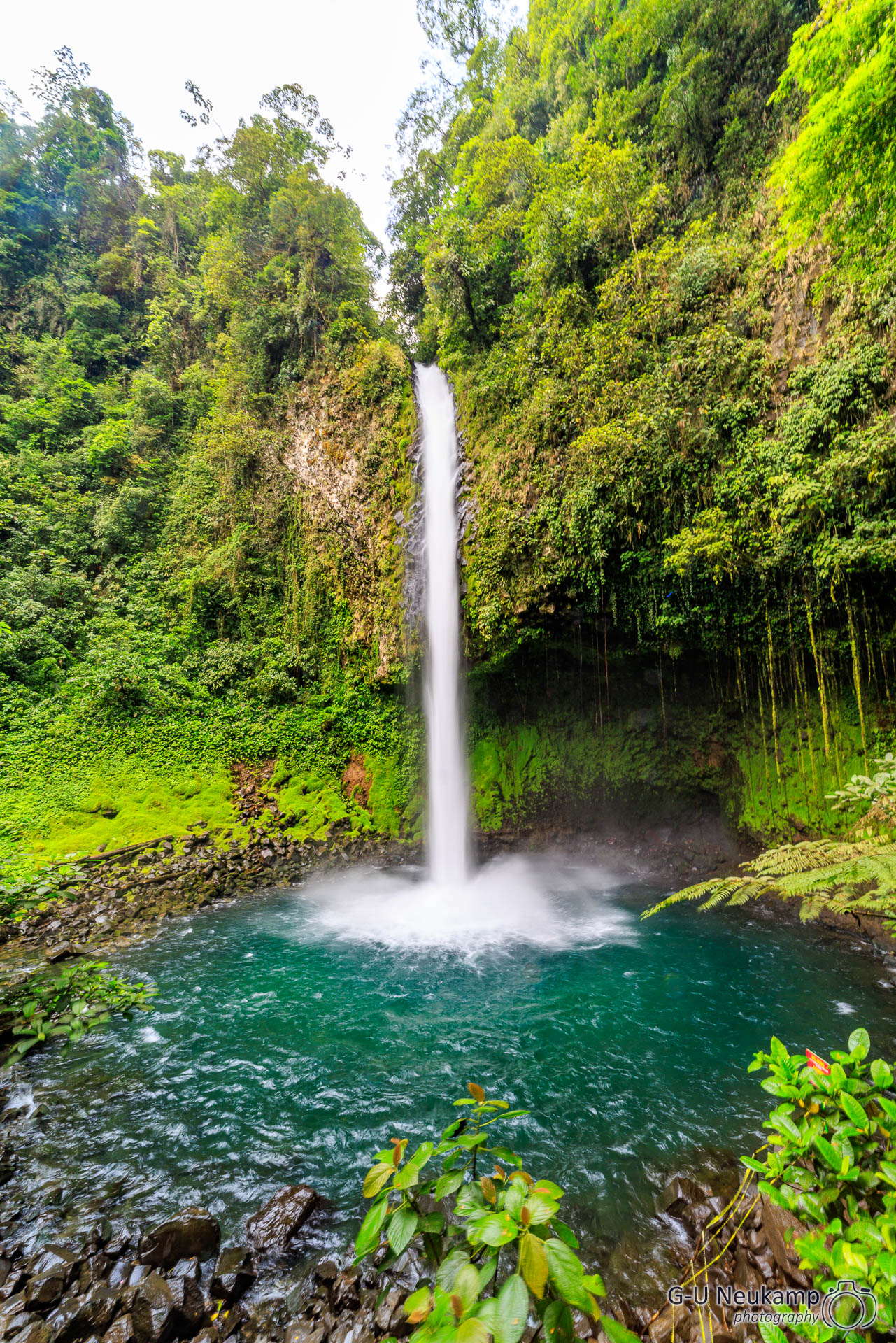
As we were there relatively early, it wasn’t very busy yet, but this changed quickly. Swimming in the basin below the waterfall is permitted, and more and more visitors took advantage of this. Nevertheless, I was able to take a few quite nice pictures, in my opinion:

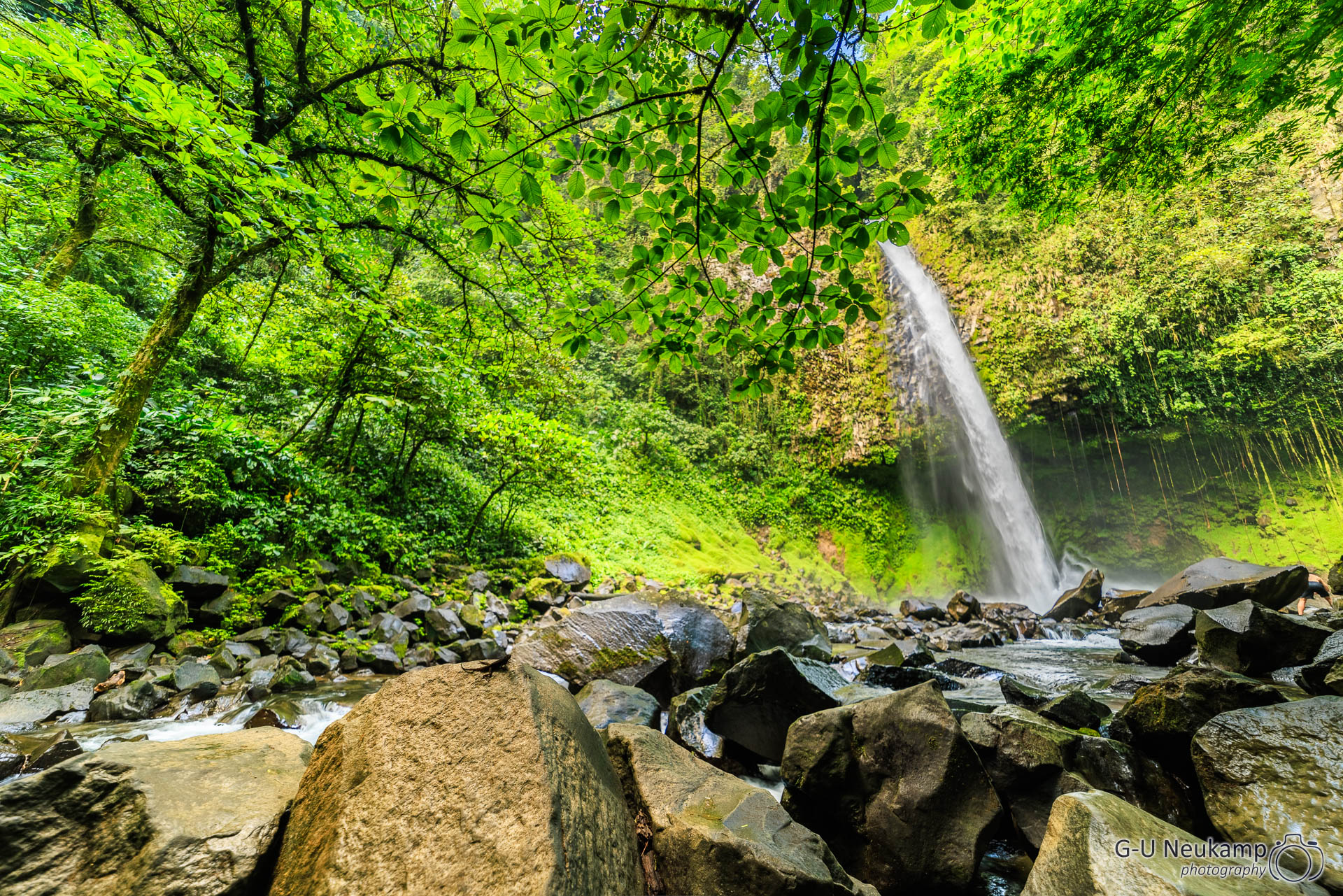
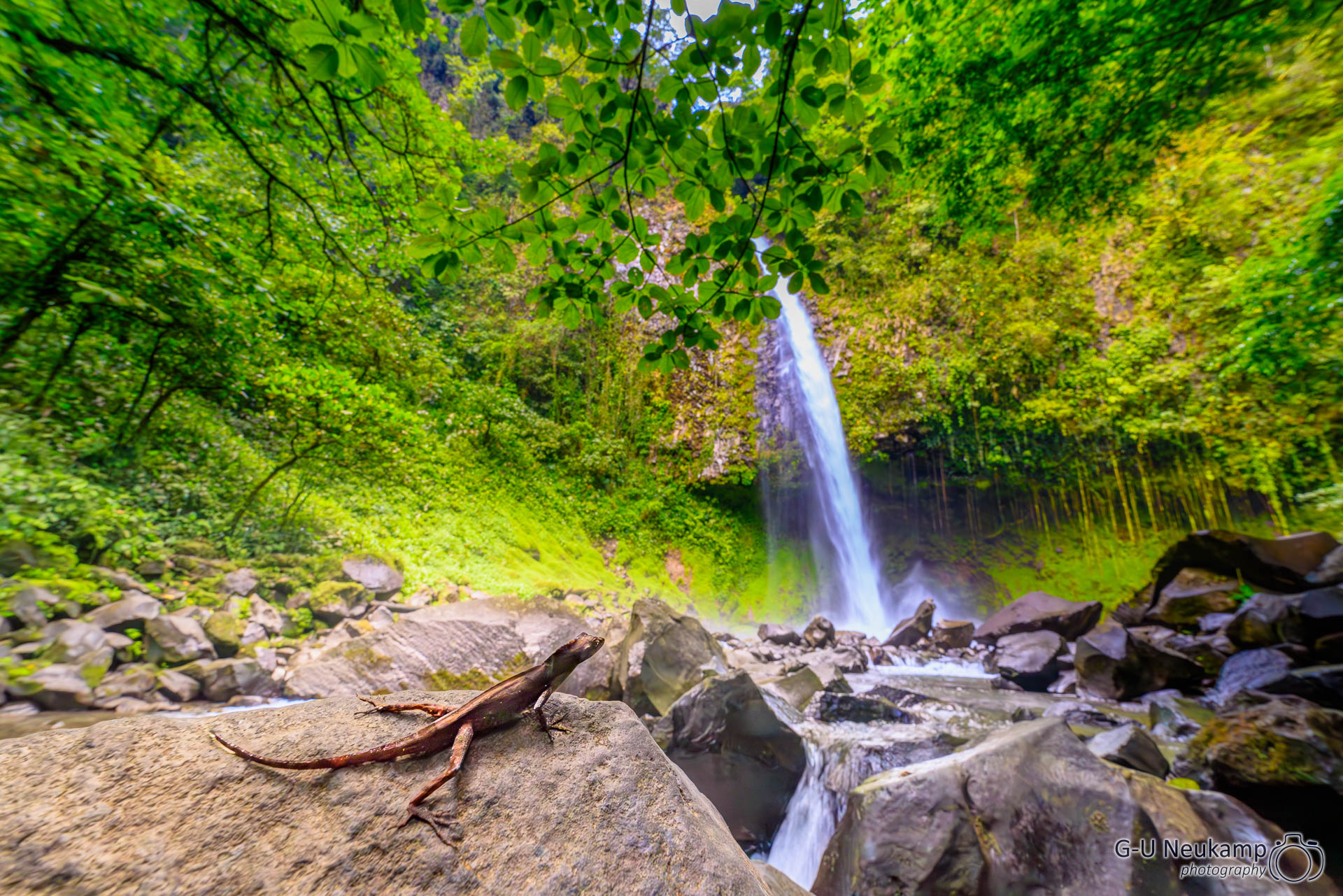
At the end, it was nice that a lizard posed for me in front of the waterfall 😉
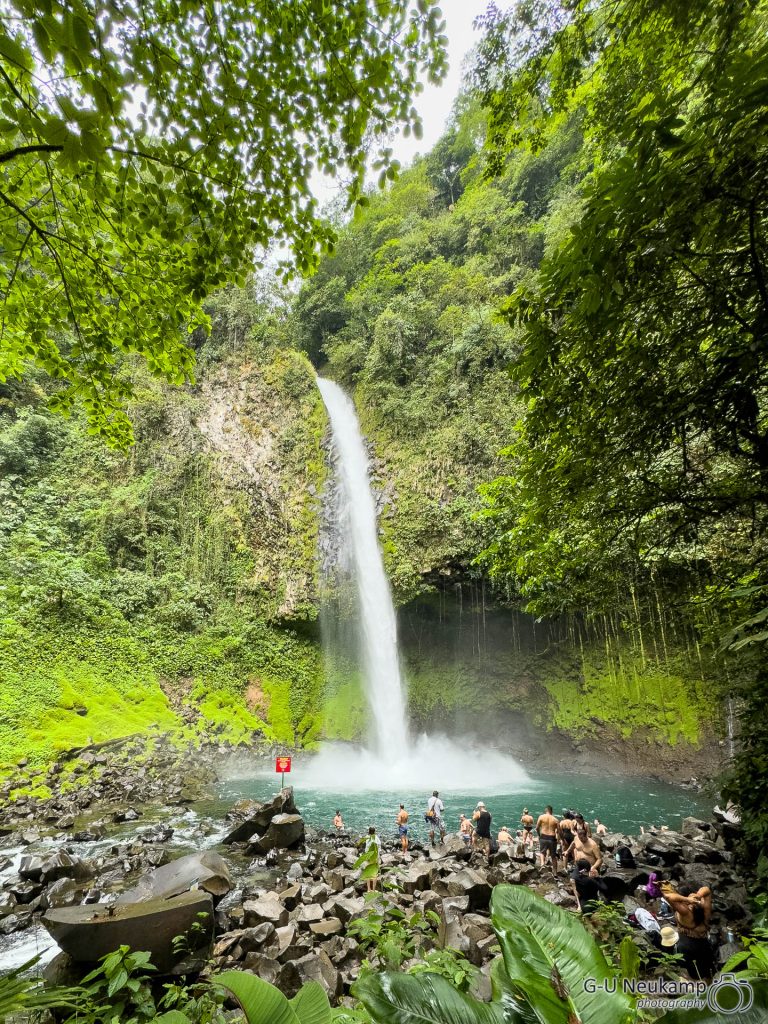
Finally, the location filled up more and more and we set off on the sweaty ascent - 500 steps at over 30°C and 100% humidity is a lot!
Back at the top, we first needed a refreshment. We had frozen yoghurt with toppings and mango, pineapple and strawberry smoothies, both of which were delicious.
After the strenuous ascent, we drove back and relaxed in the lodge. We made extensive use of the jacuzzi in our casita. Later, we drove to Lake Arenal for sunset. Unfortunately, clouds had gathered above the volcano again. Nevertheless, there was a beautiful light atmosphere. Here are drone shots of the cloudy volcano and lake:
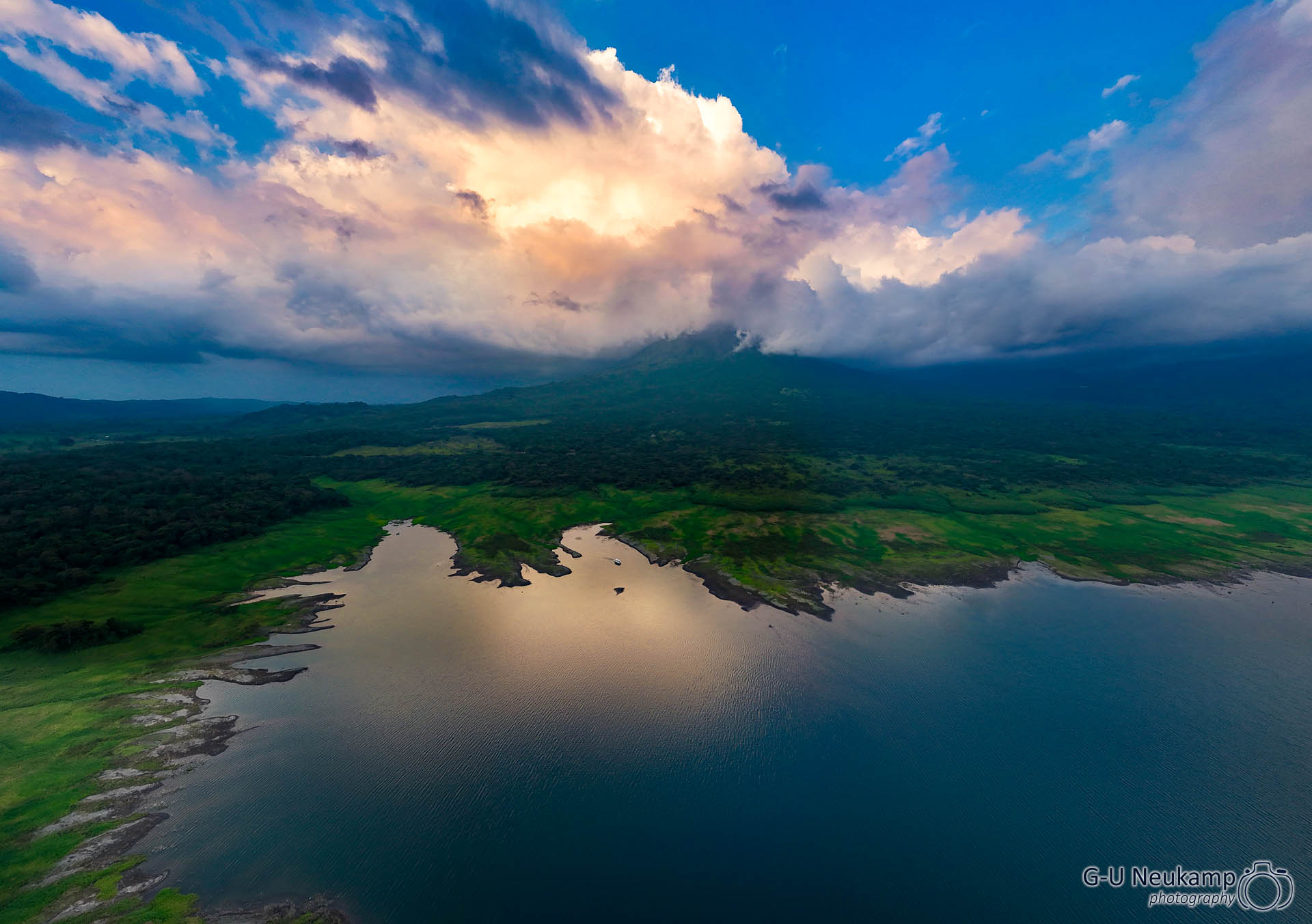
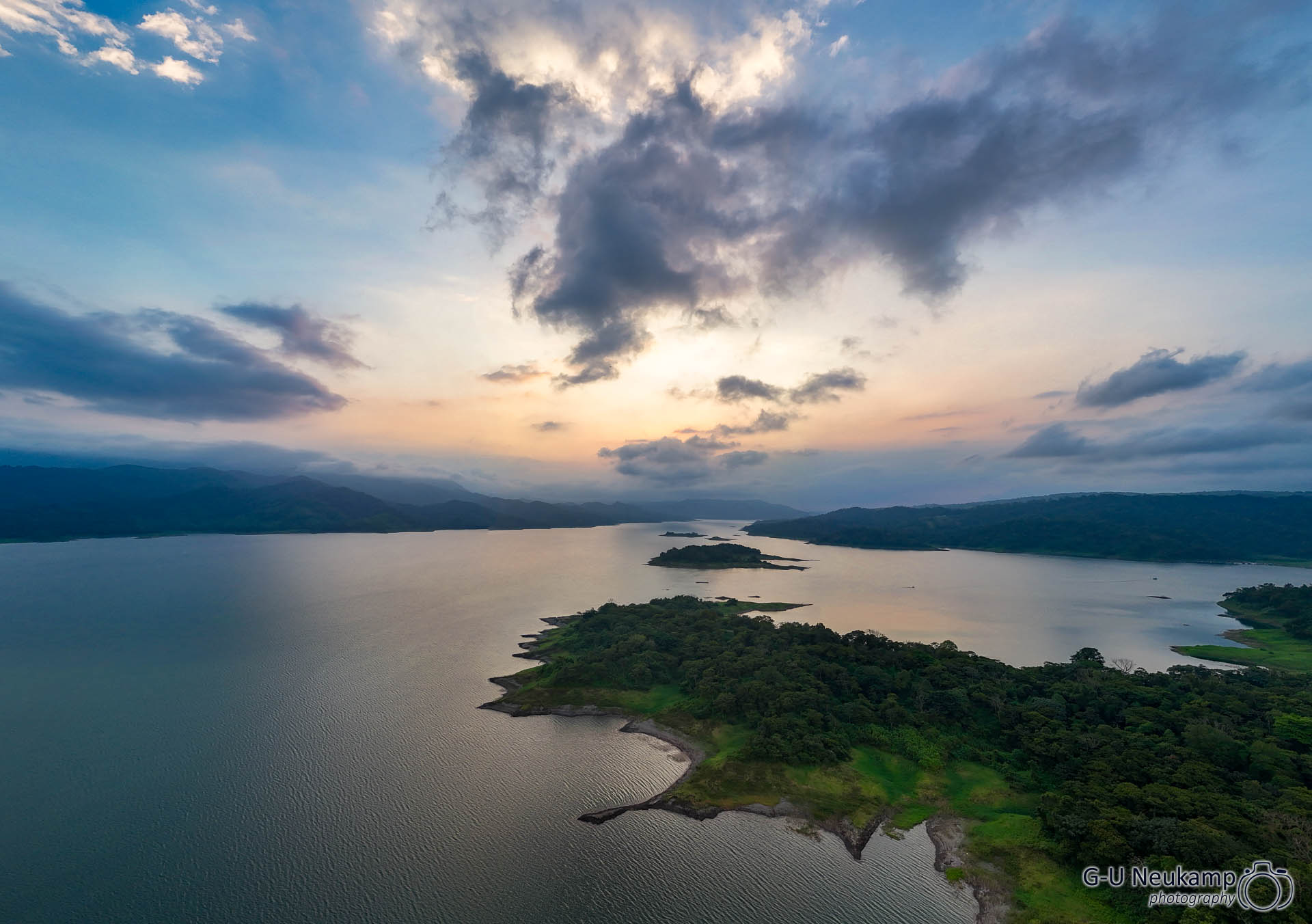
And a 360° panorama with lake and volcano:
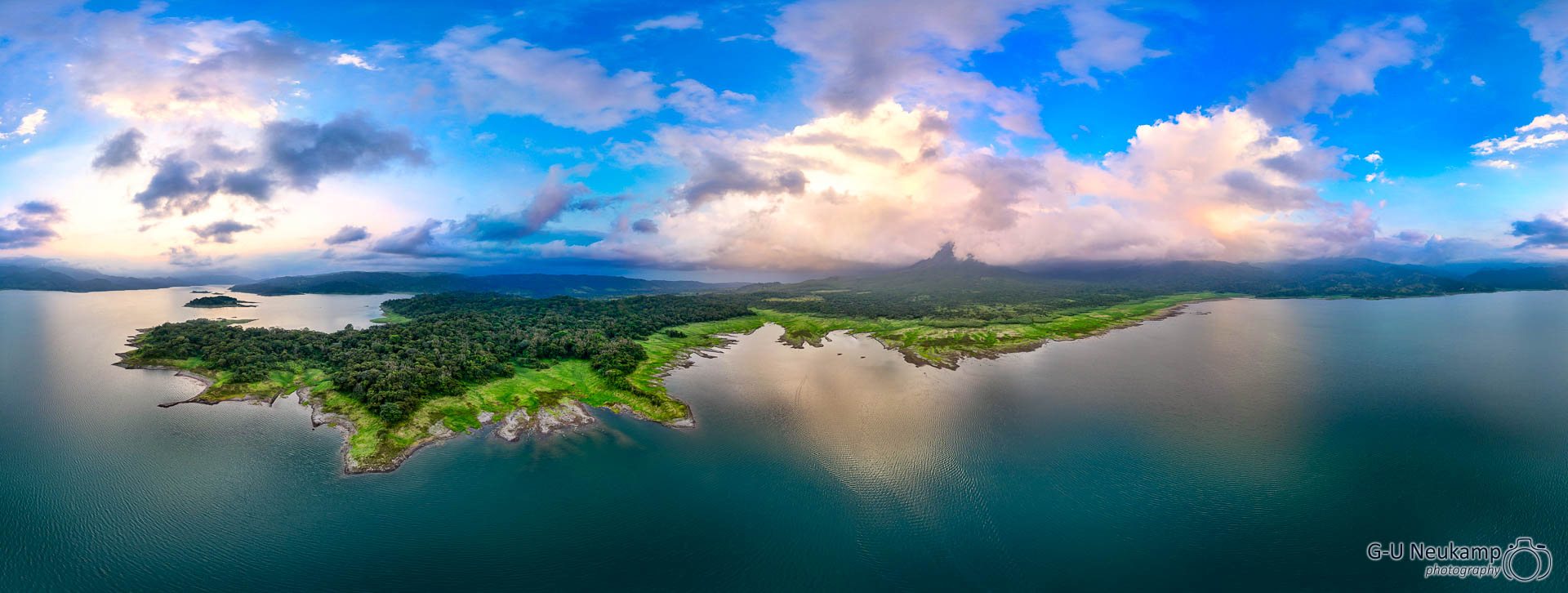
On the way to the restaurant in the evening, a very nice lodge employee approached us and showed us the national animal of Costa Rica, a red-eyed tree frog (Agalychnis callidryas), on a leaf next to the path to the bar. As we hadn’t expected such a sighting, I only had an iPhone to hand, but the photos still turned out quite nice:
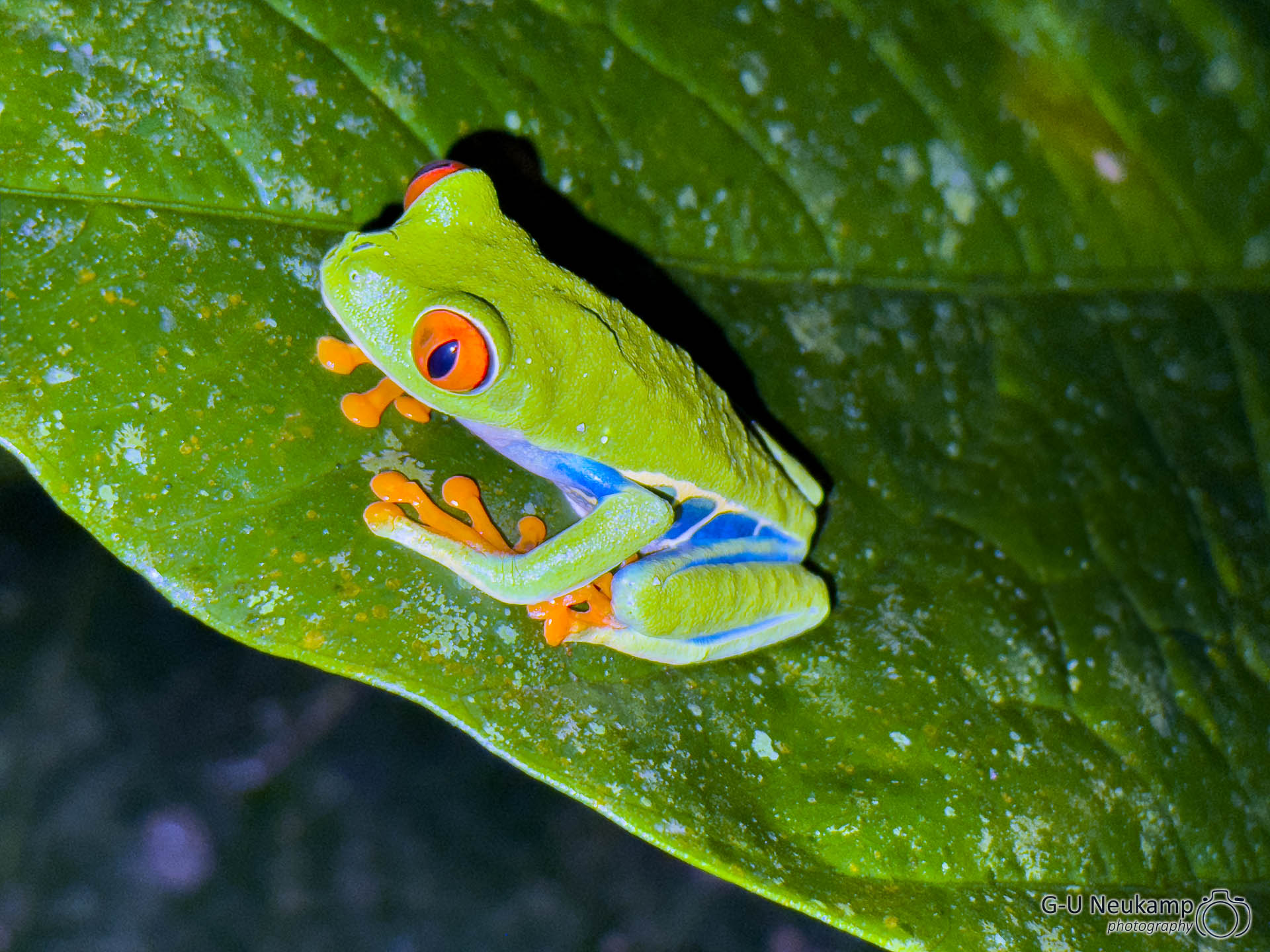
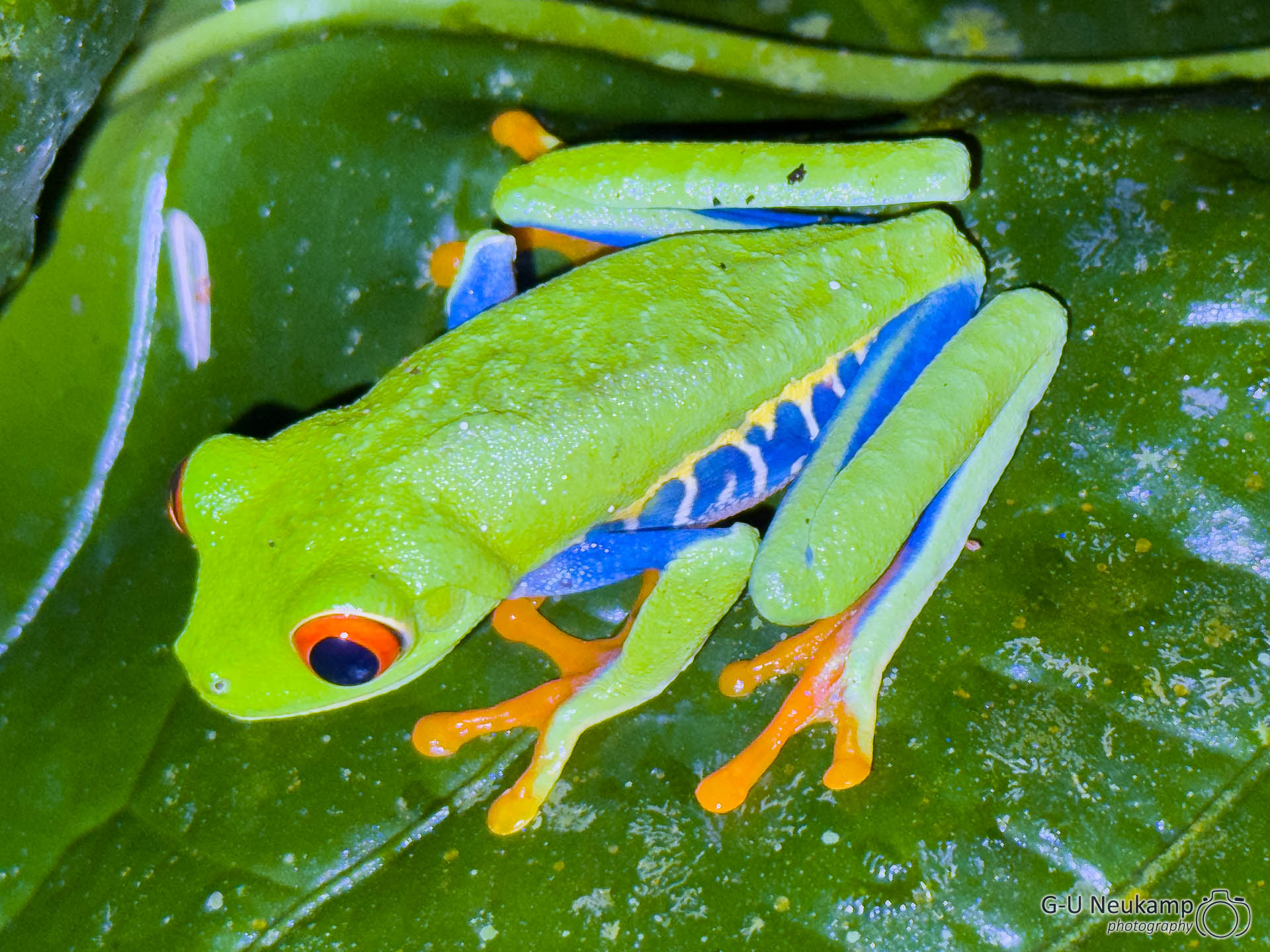
Afterwards, we enjoyed the multi-course “Costa Rica Experience Menu” we had reserved the day before in the bar, accompanied by drinks - it was delicious. Afterwards, we fell into our beds dead tired.
March 23rd, 2024
During our early morning breakfast (6:00 a.m.) on the restaurant terrace, we spotted a small green hummingbird that was busy flying off the same leaf again and again and then settling there again. This was of course the incentive for my equally photo-enthusiastic friend Harry and me to catch the little one in flight - a real challenge in the poor early morning light and the high speed of the tiny bird. Here are some of the results:
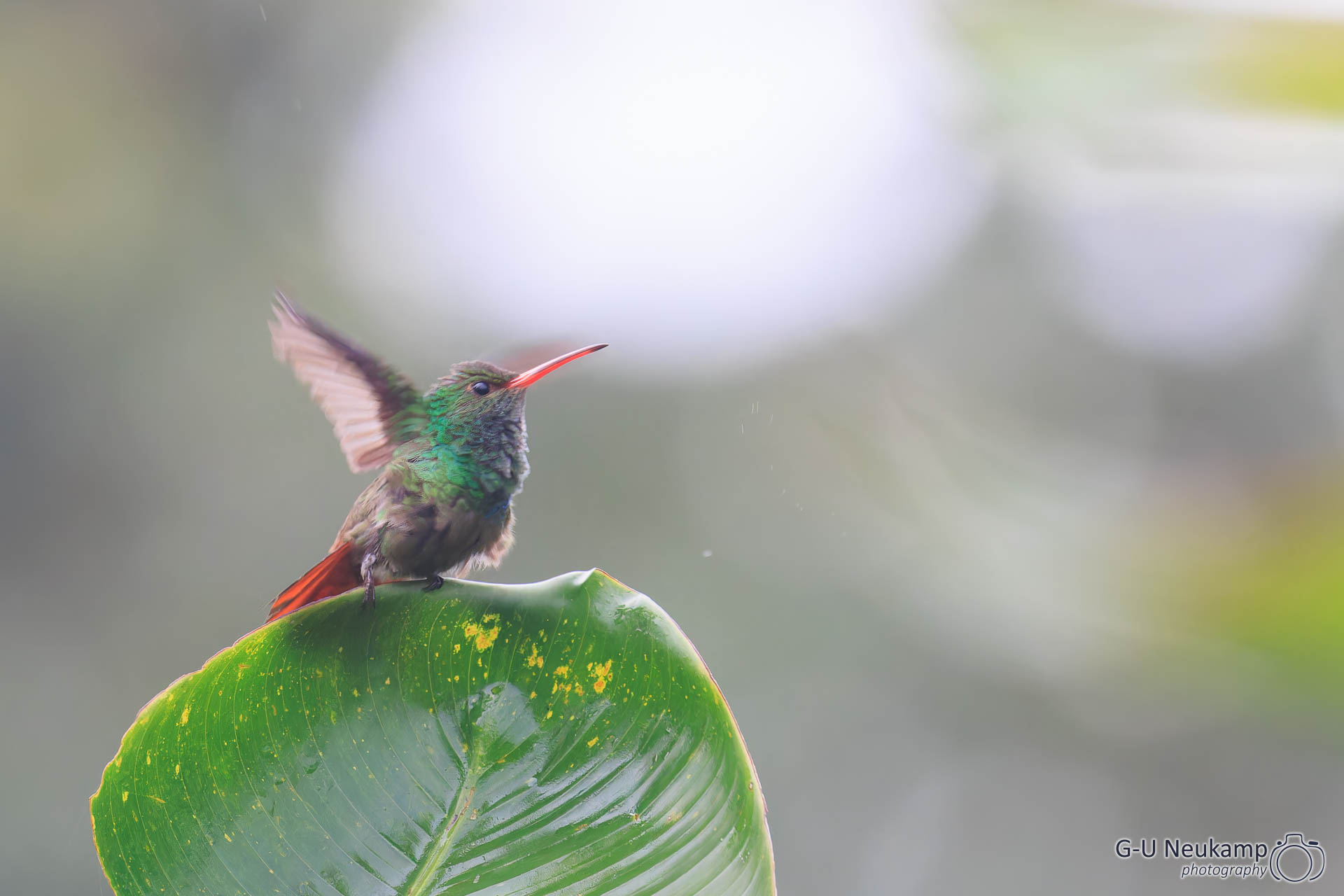
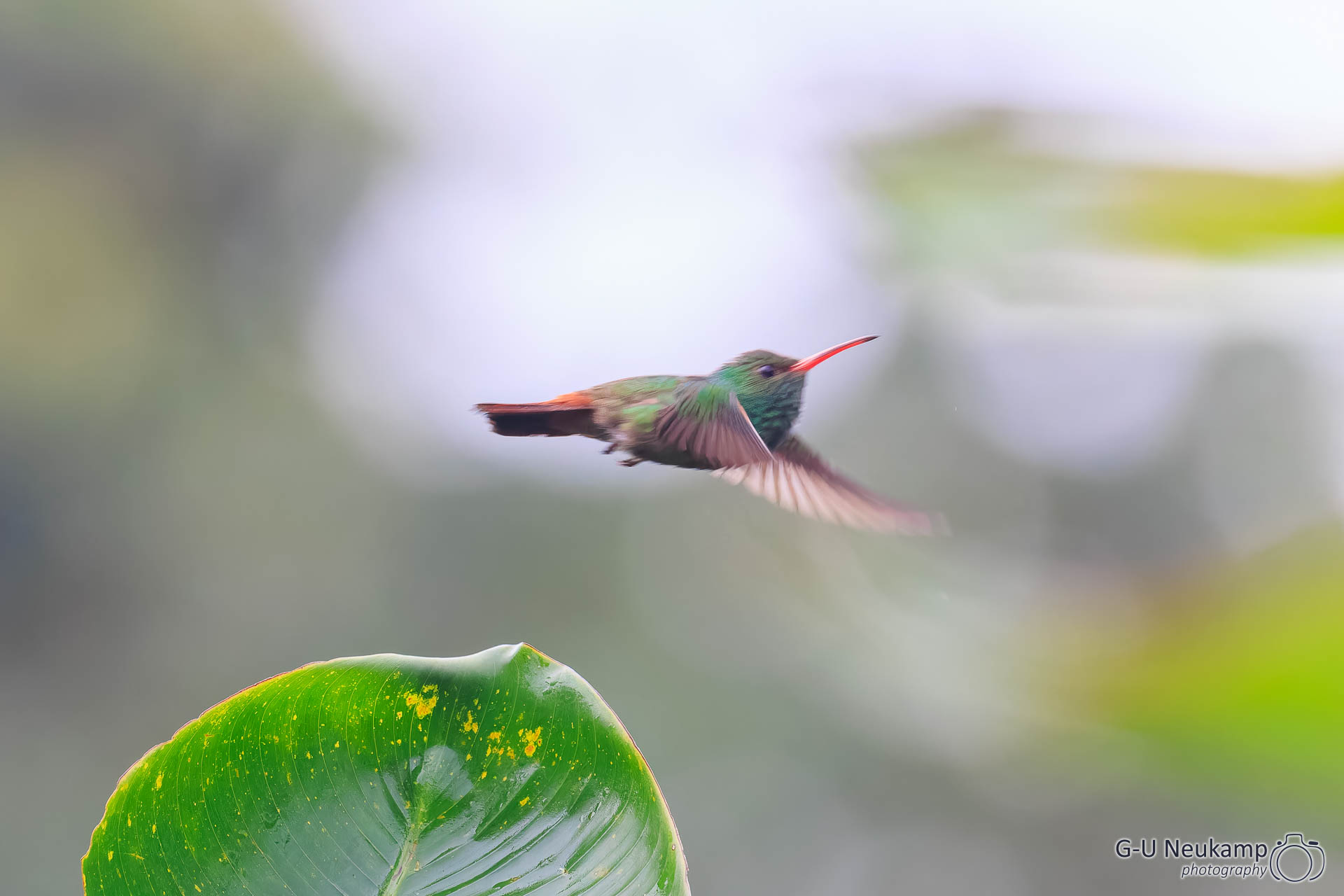
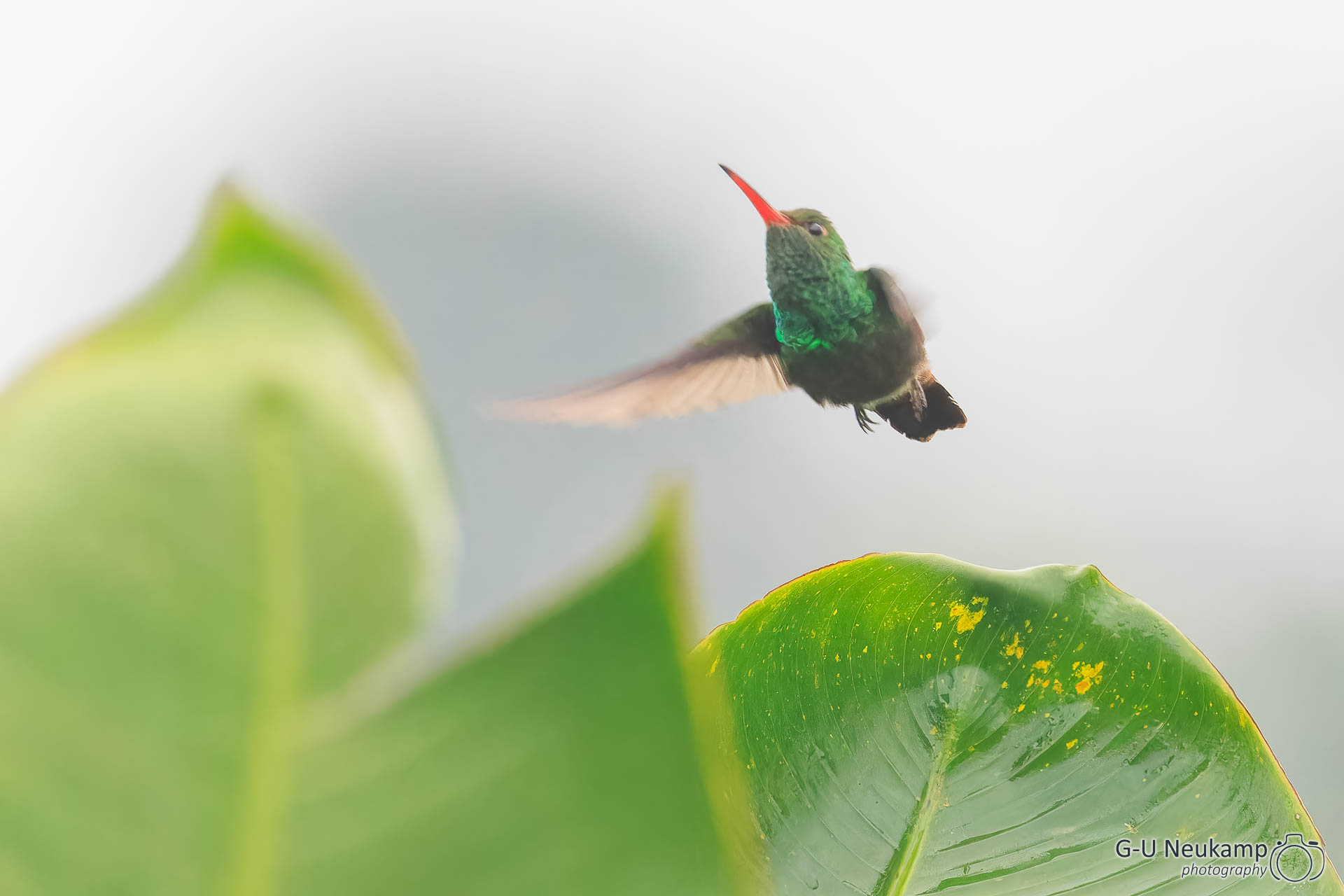
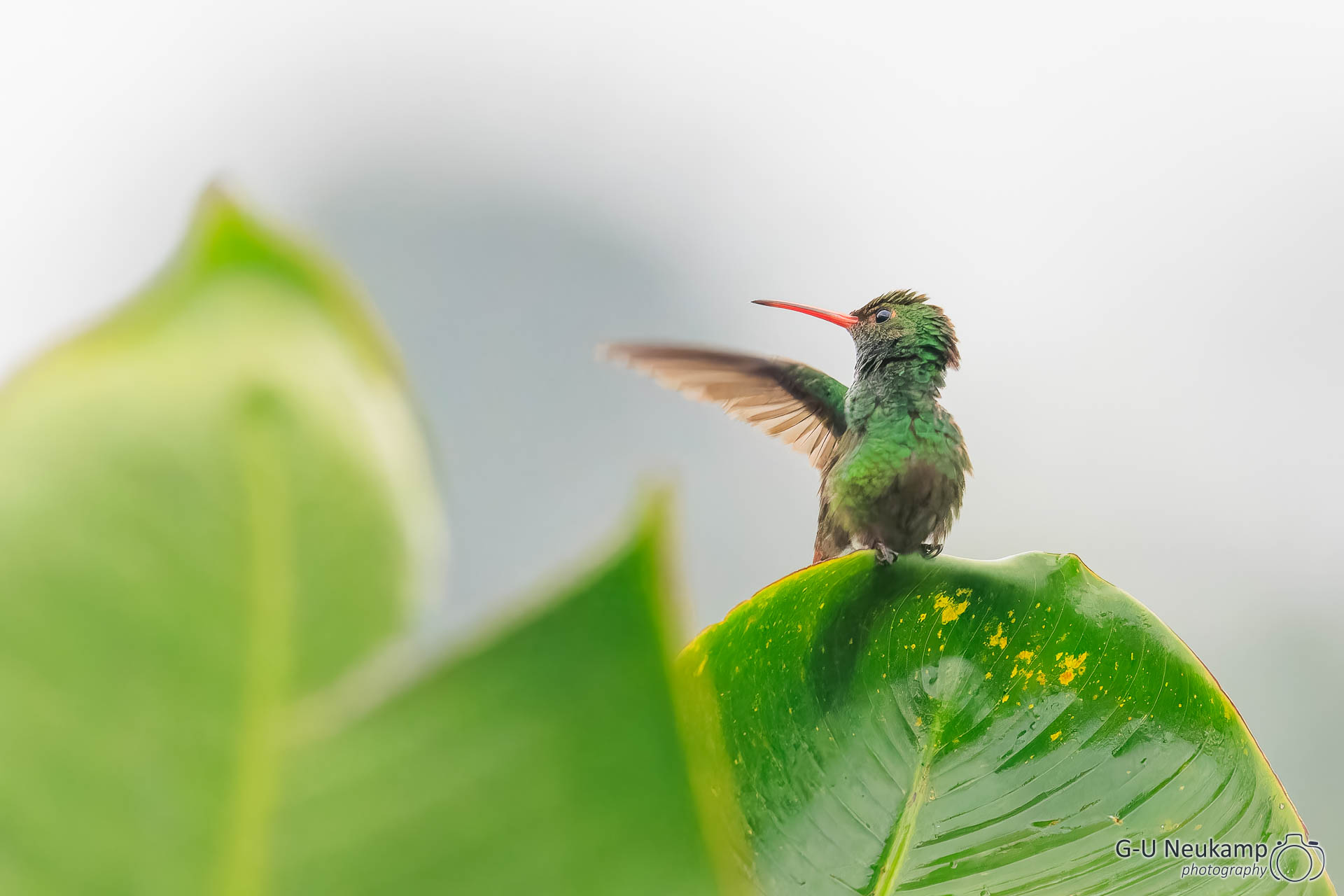
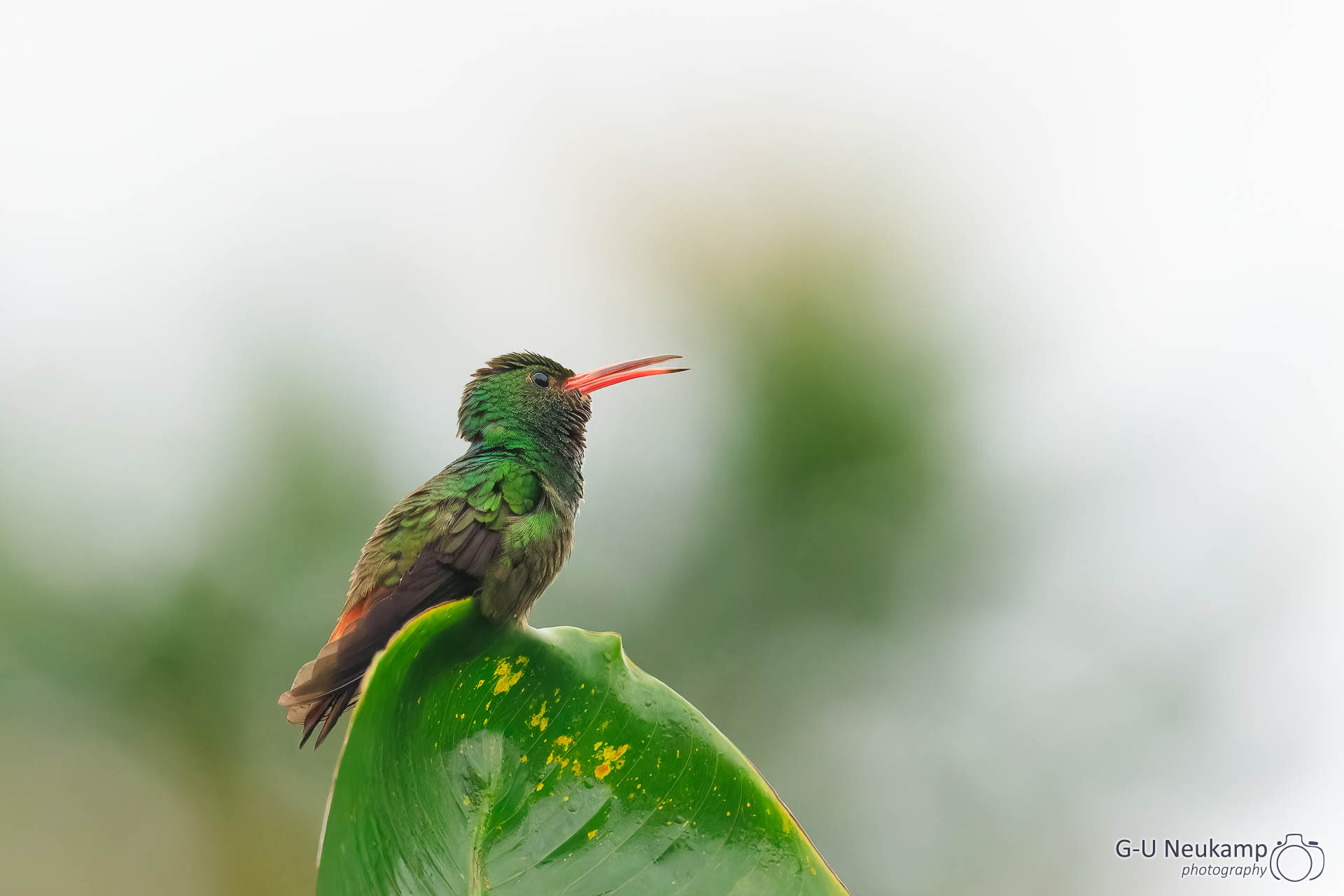
Well, admittedly there is still a lot of room for improvement in terms of quality. Unfortunately, the pictures are not as sharp as I would have liked. But you always learn something in the process and we managed to photograph the little birds much better later on, so please read on…
Hummingbirds are widespread in Costa Rica and are among the country’s most fascinating birds. With over 50 different species, including the eye-catching purple sable hummingbird and the glittering emerald-throated hummingbird, Costa Rica is a birdwatcher’s paradise. Hummingbirds are known for their ability to hover in the air, which allows them to drink nectar from flowers while standing in the air. Their rapid wing beats, which can be up to 80 times per second, create the characteristic buzz of these small birds.
Hummingbirds are very small birds. Their size varies depending on the species, but is typically between 6 and 12 centimeters. They usually weigh between 2 and 6 grams.
The colorful hummingbirds play an important role in the ecosystem as they support many plant species as pollinators. Costa Rica offers ideal habitats for these birds due to its different climatic zones, from lowland rainforests to cloud forests. Their bright colors and lively behavior make them a symbol of Costa Rica’s natural beauty.
We then drove to the “Místico Arenal Hanging Bridges Park”, a well-known attraction in the area. The park is located in a private, family-run nature reserve. The park has a total of six large hanging bridges (some up to 50 meters above the ground) and nine normal bridges. The bridges are spread over a circular route that is around 3.2 kilometers long. It takes about 2 1/2 hours to walk the entire well-developed circular route. The entrance fee of 32$ per person is not cheap, but the tour is very worthwhile. Here are some pictures of the site:
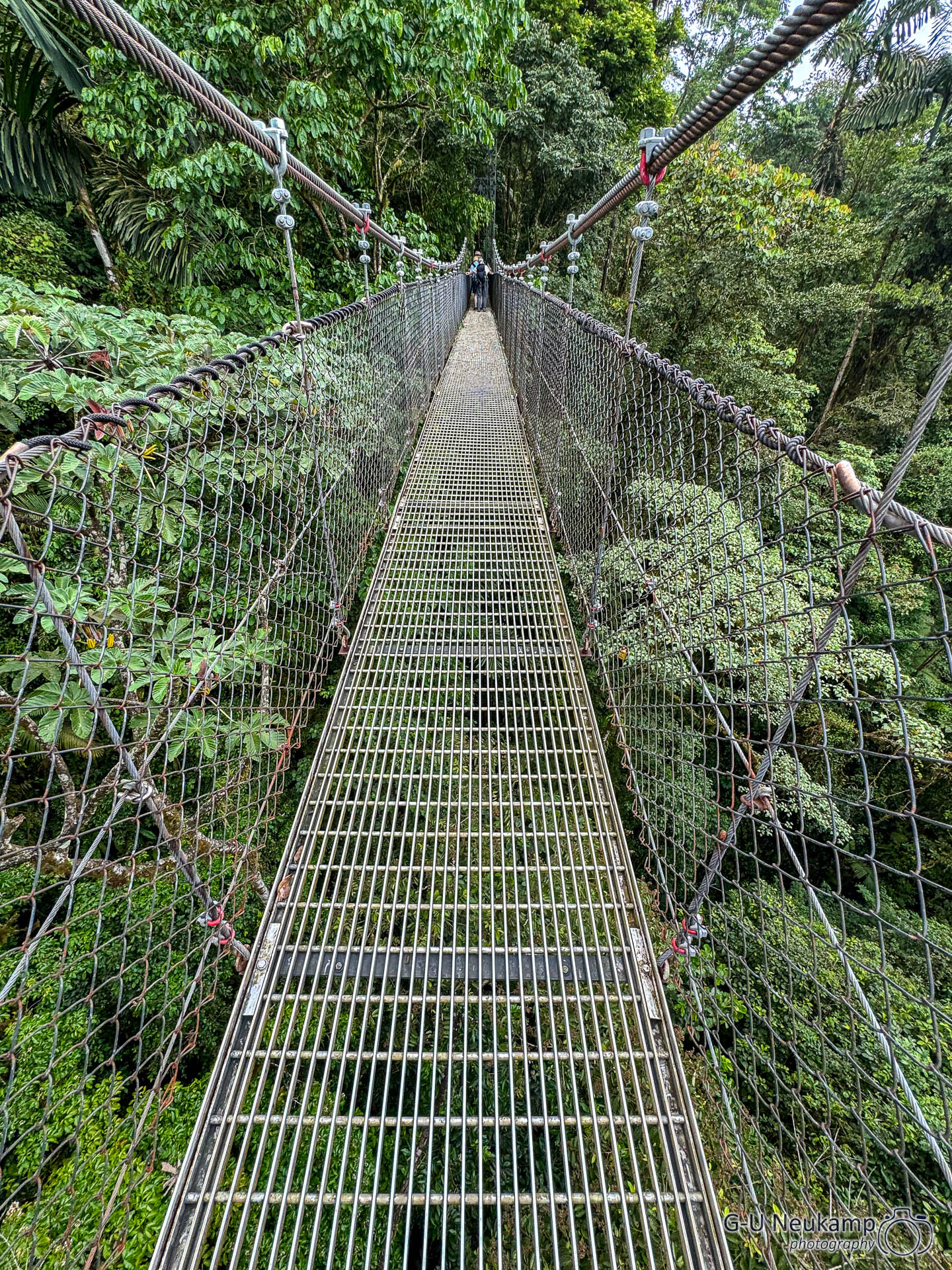
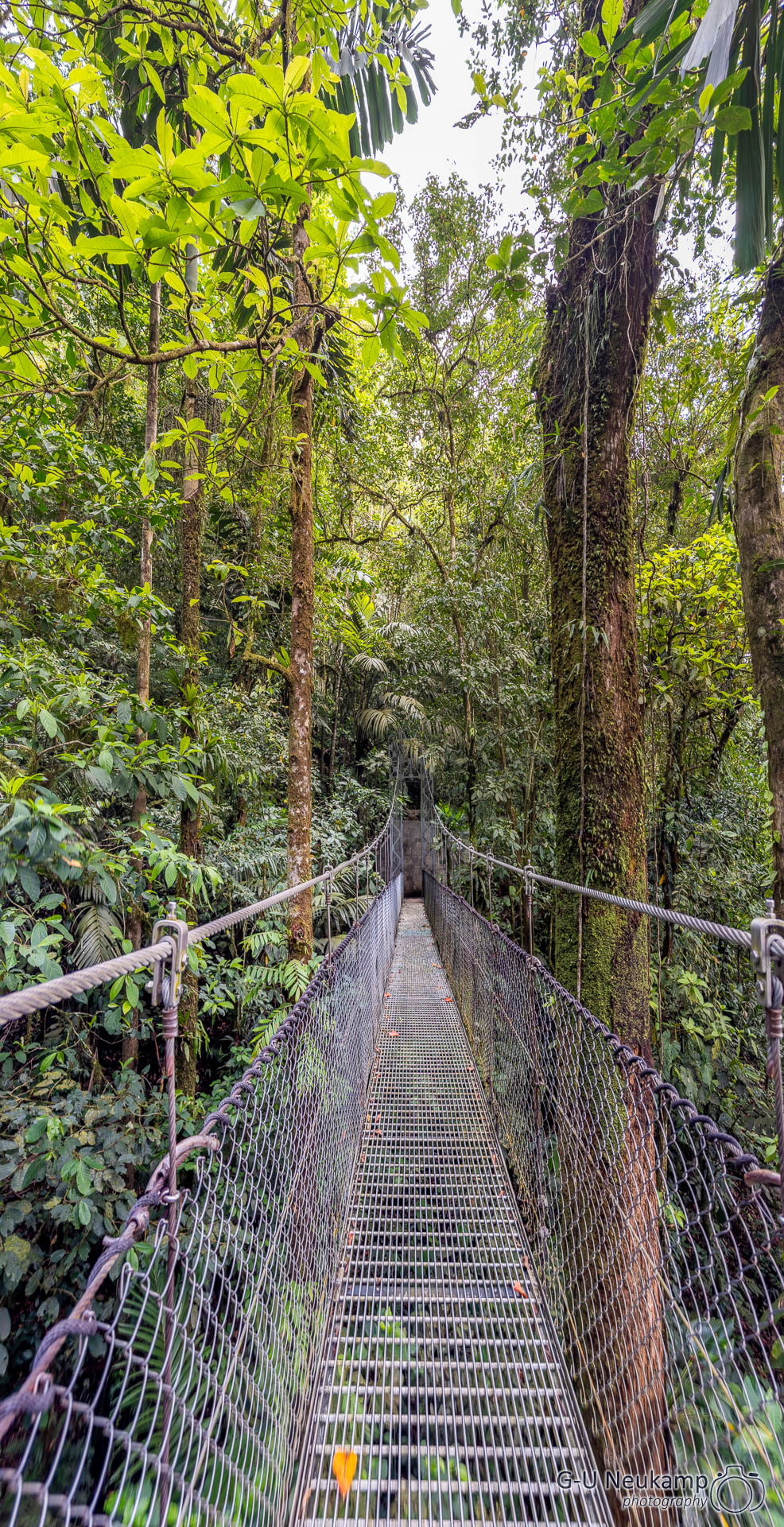
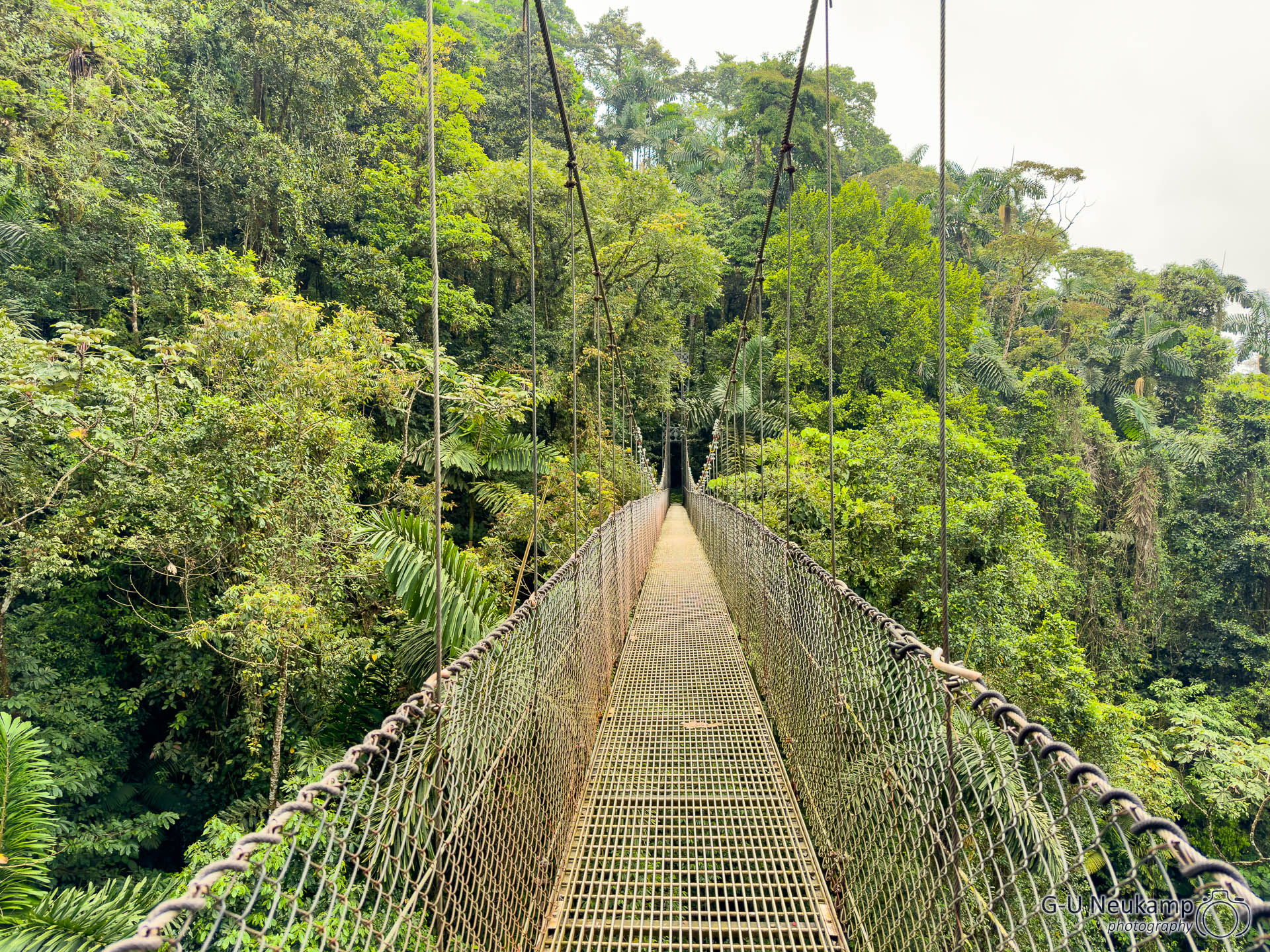
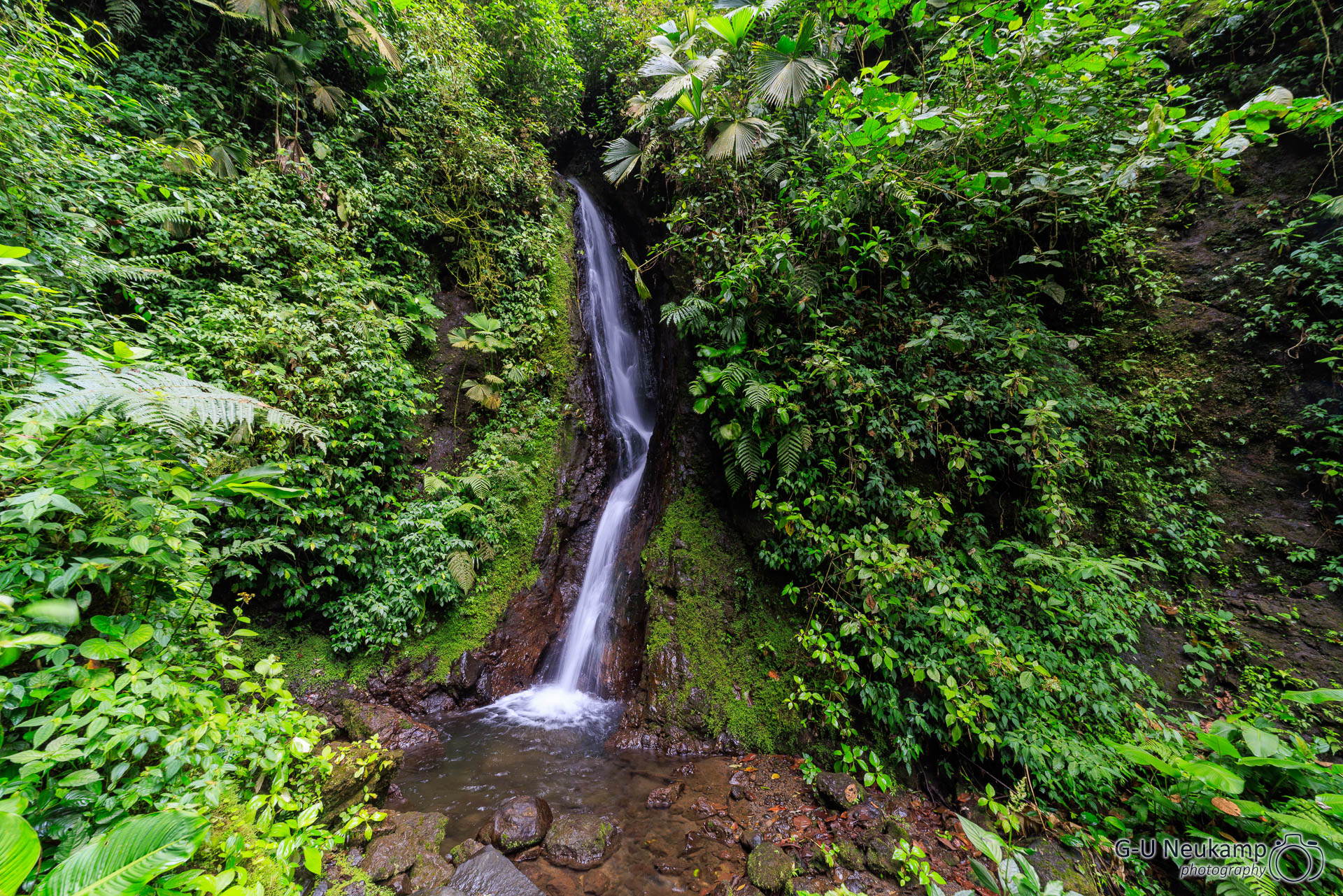
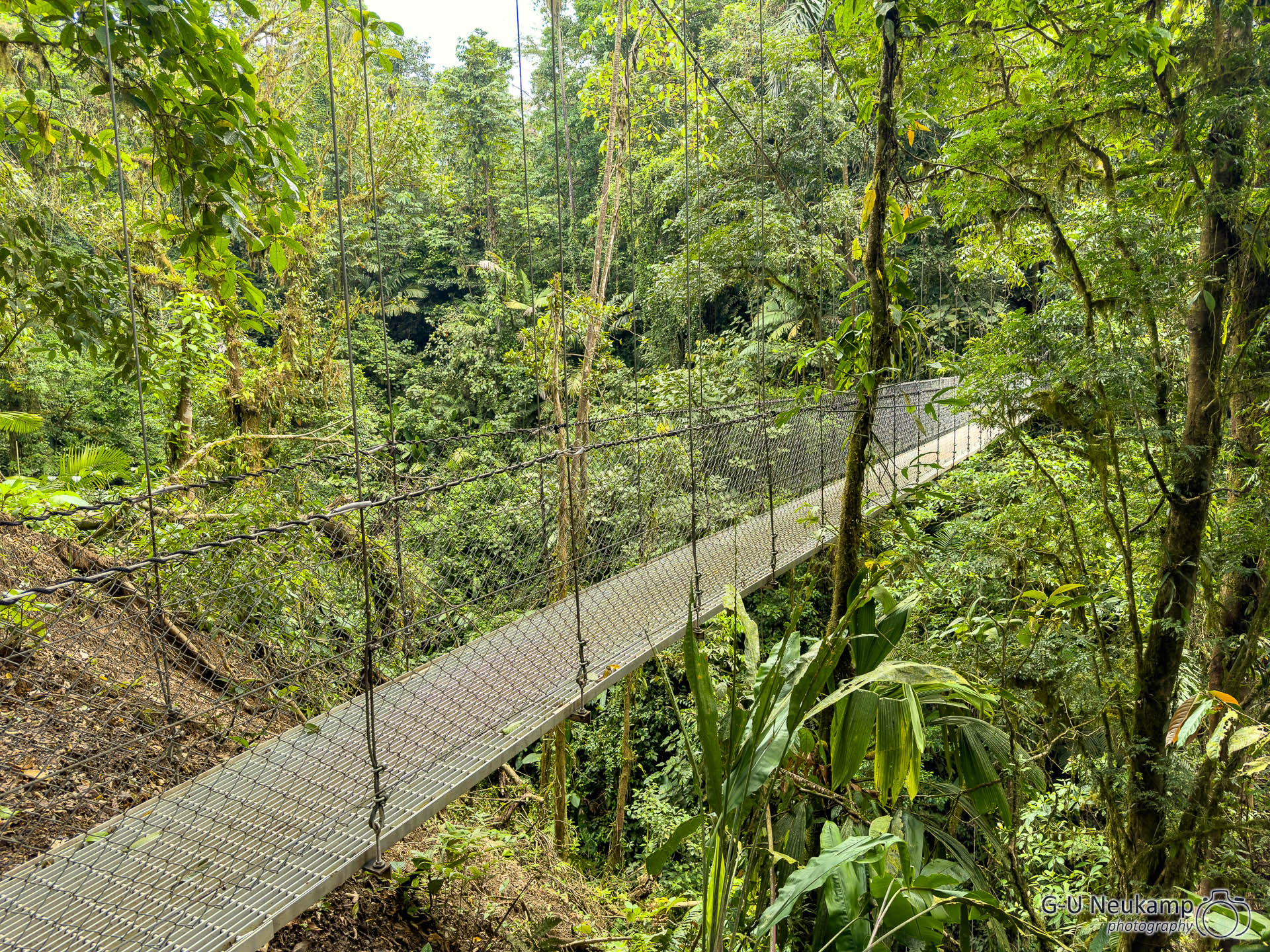
On the tour we discovered two poisonous representatives of the local fauna. Firstly, two eyelash vipers (Bothriechis schlegelii):
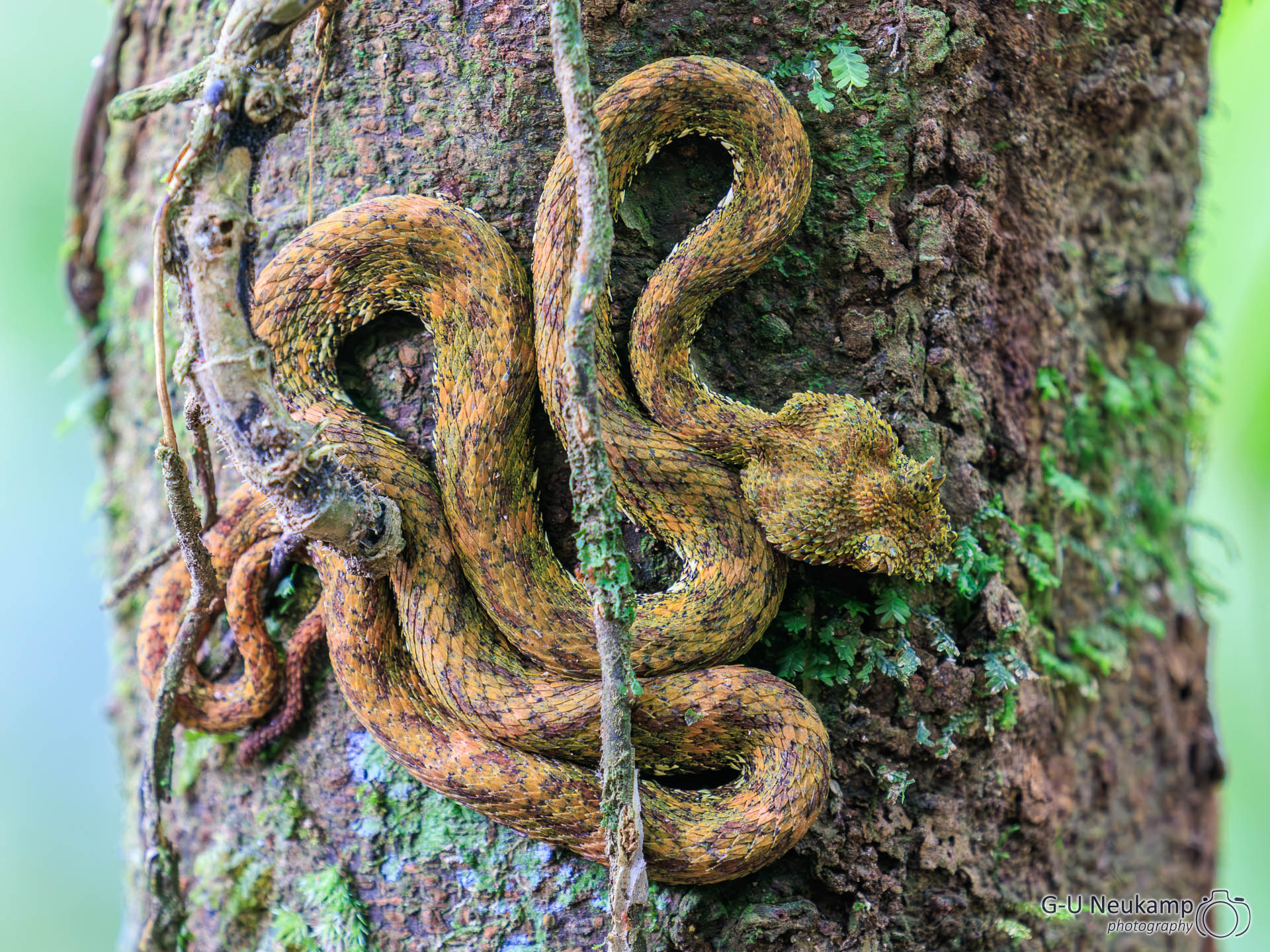
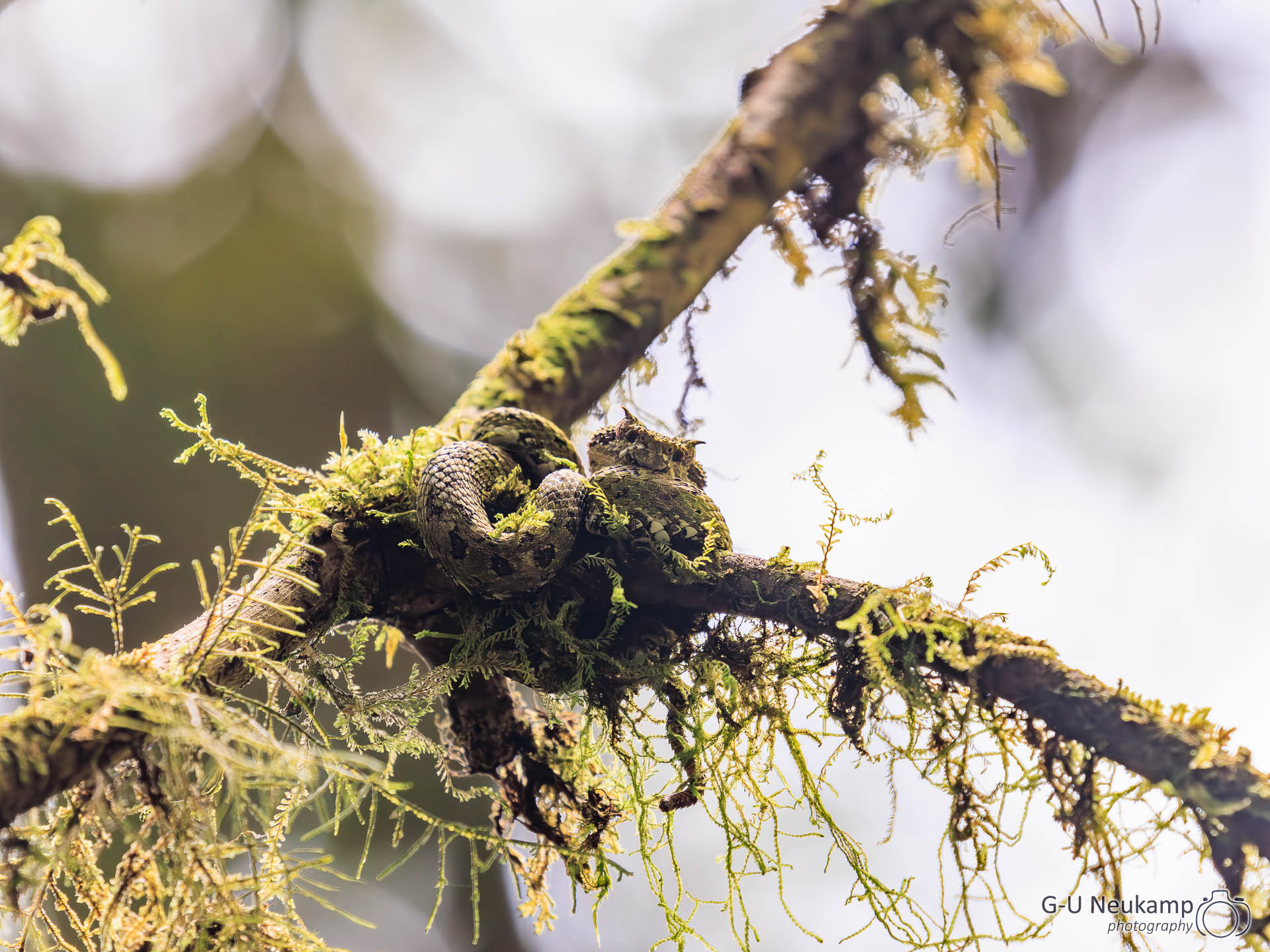
Eyelash vipers grow to a length of 60, sometimes just over 80 centimeters. Females are larger than the males. They are very variably colored and can be green, olive green, blue, brown, yellow or yellow-brown. The underside is yellow or green. The green and yellow-brown specimens often have zigzag bands or a net-like pattern of reddish or brown spots over the base color. The head of the lance viper is clearly set off from the rest of the body and has a triangular shape. The eye has a vertical pupil. There are two to three horn-like scales above the eye. The animals have two long venomous teeth in the upper jaw, which are folded back when the mouth is closed.
The eyelash viper is highly venomous, gives no warning of its venomous bite and strikes at distances of up to half a body length. The venom has tissue-destroying and neurotoxic components. There are frequent accidents involving workers in banana and other plantations, but these are not usually fatal. However, the poison is often underestimated, especially in terrarium keeping, and can lead to amputations and severe mutilations.
And a Strawberry poison-dart frog (Oophaga pumilio, bluejeans frog):
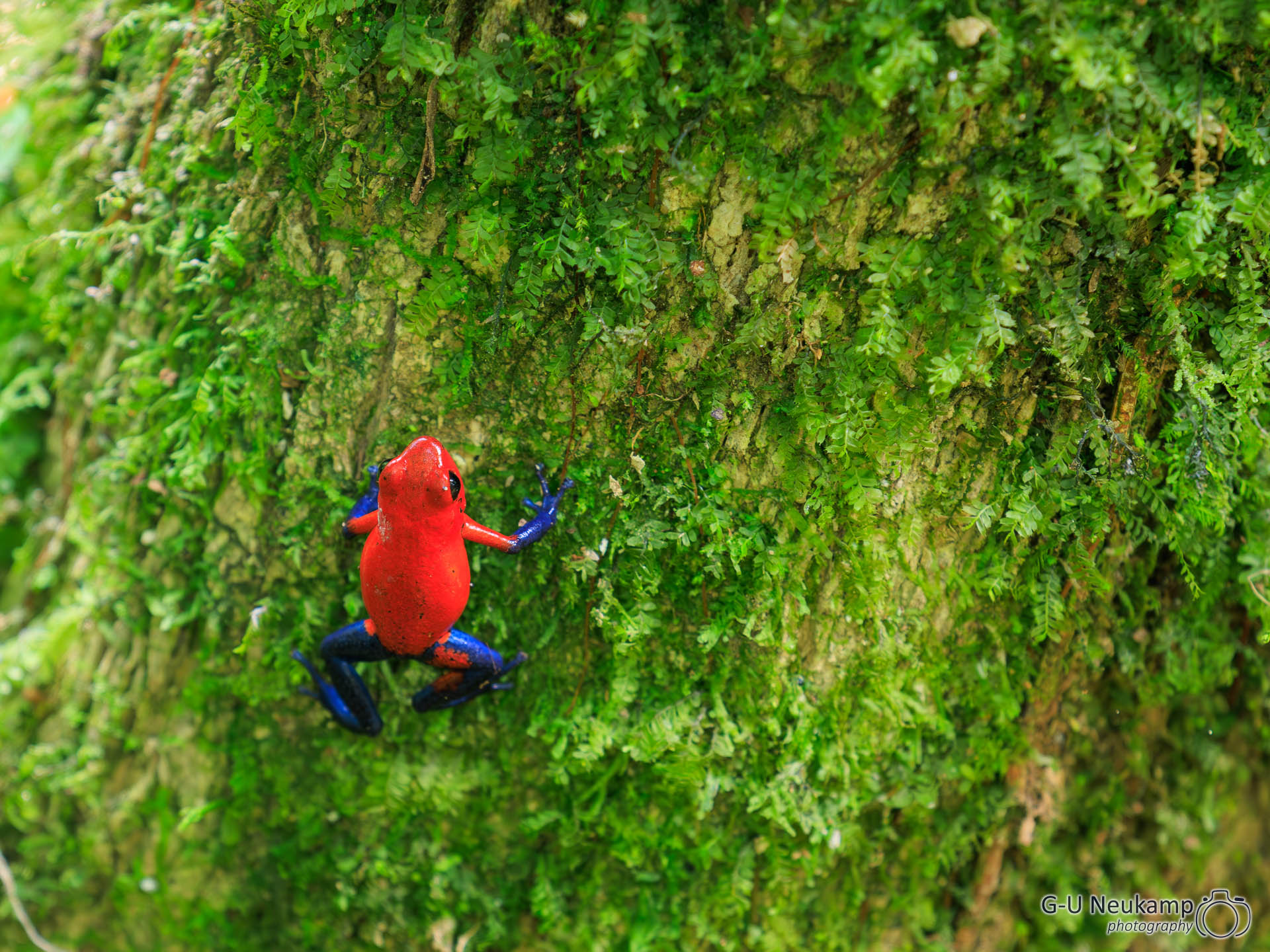

Strawberry poison-dart frogs feed mainly on ants, but also eat small arthropods and beetles.
Like many other tree climbing frogs, the Strawberry poison-dart frog also secretes venom via the surface of its skin. Its ability to accumulate venom is based in particular on its diet of ants. In addition to formic acid, scale ants also produce poisonous alkaloids. However, as the frogs cannot produce any toxins themselves and are dependent on their food for toxin accumulation, they remain toxin-free in captivity without being fed with ants.
The flora was also quite photogenic:
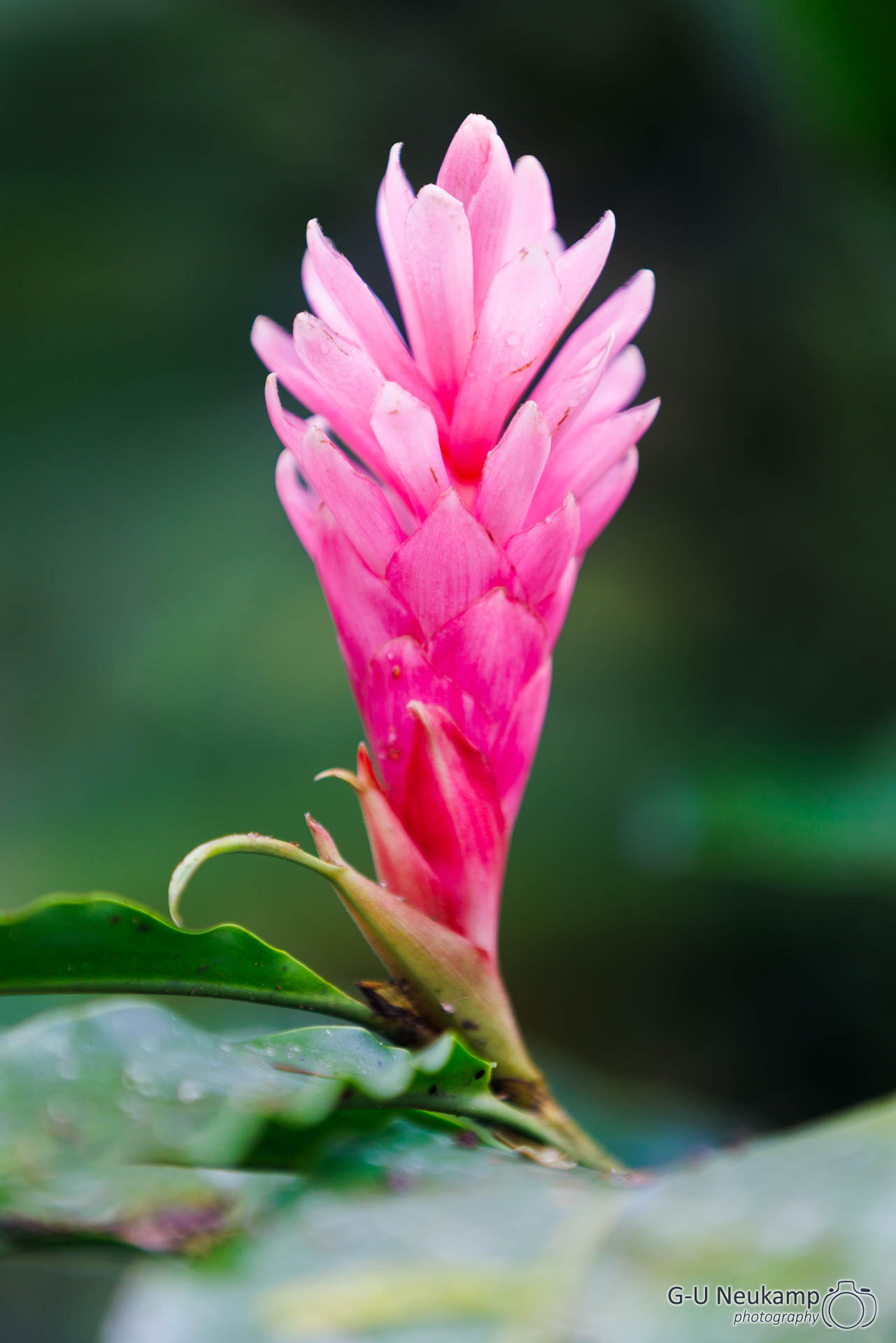
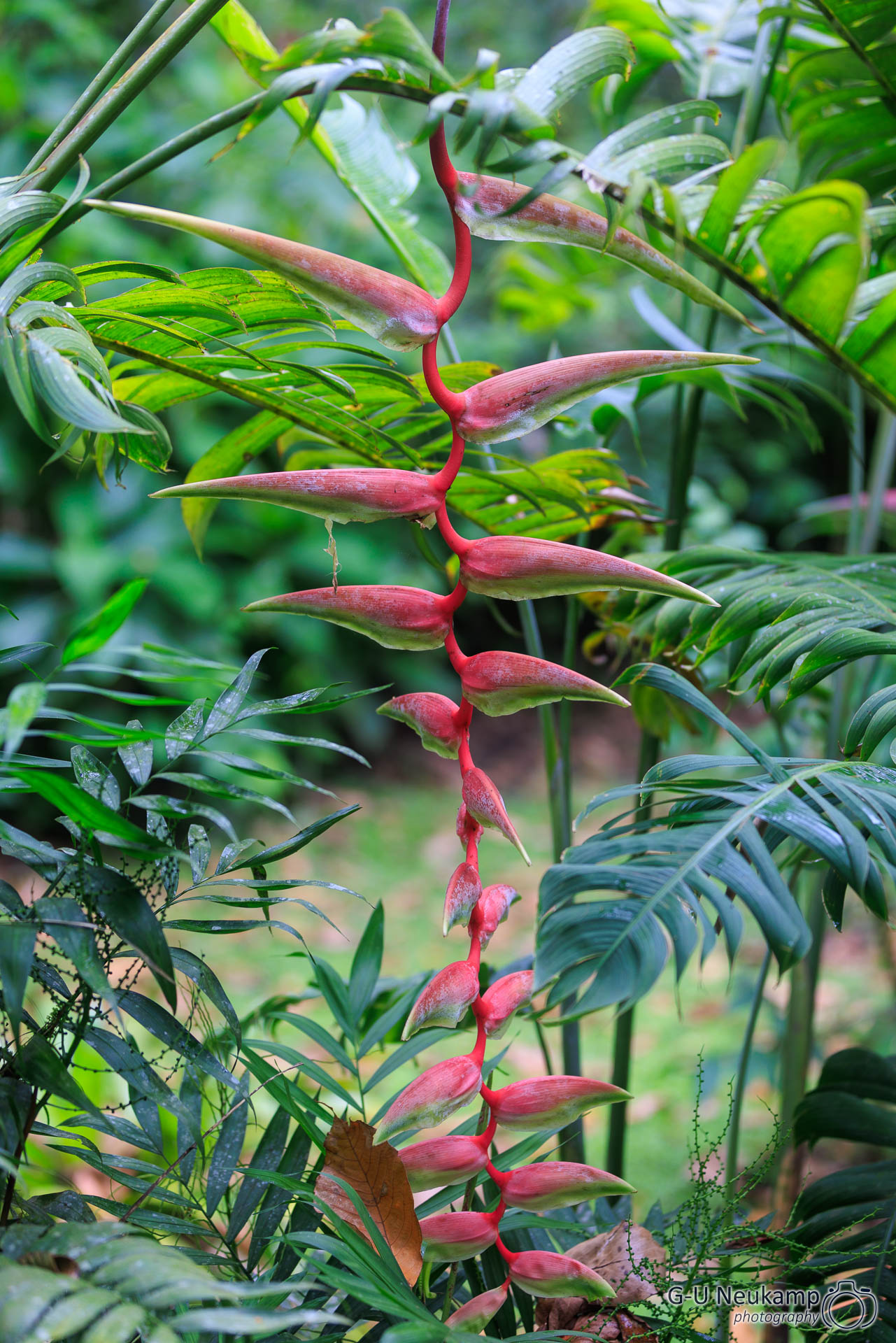
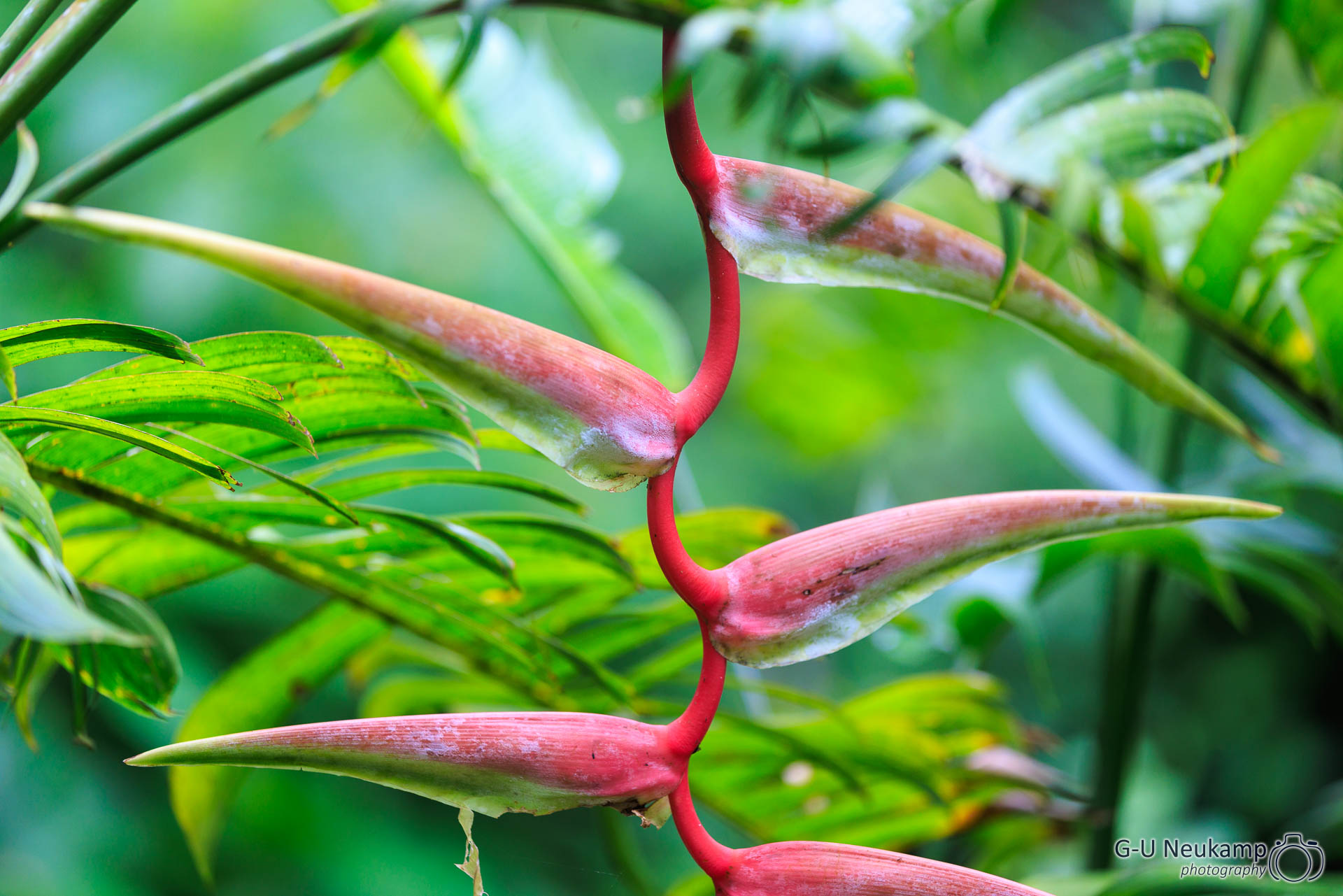
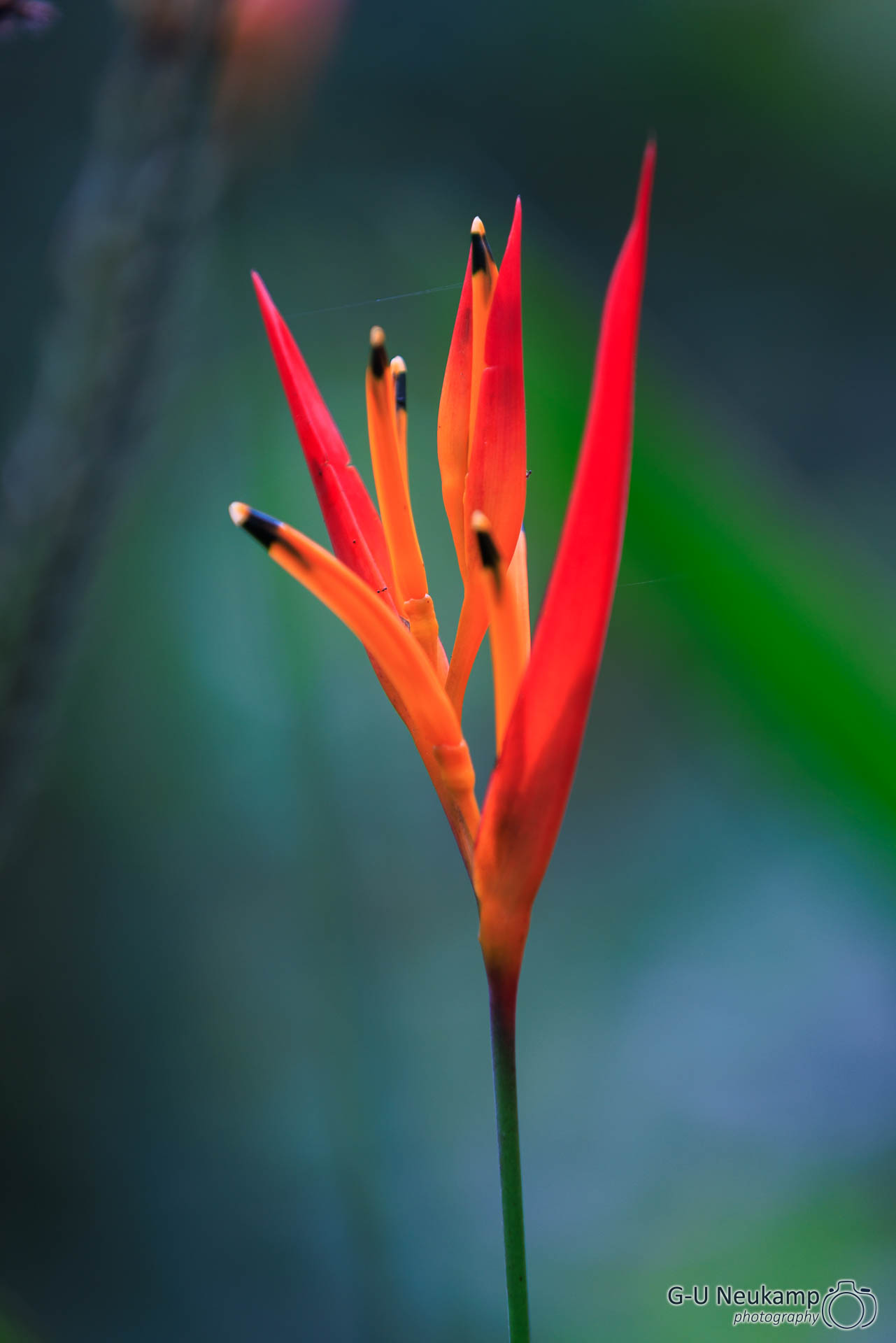
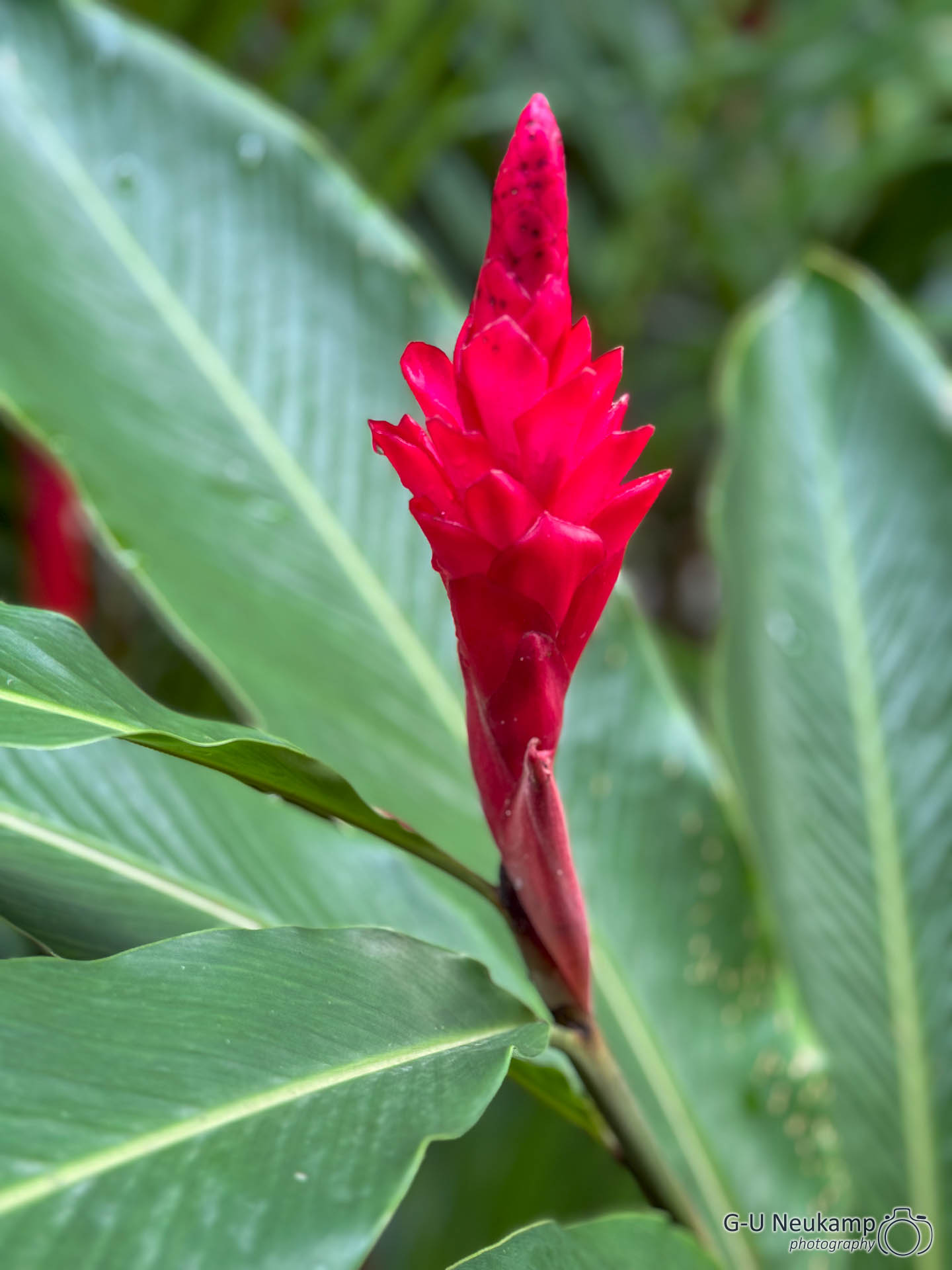
All in all, the tour was very beautiful, but in the heat (a good 30° C) and high humidity, it was also extremely perspiring. On the way back, the Arenal volcano was once again mostly cloudless, so we took off our drones once again:


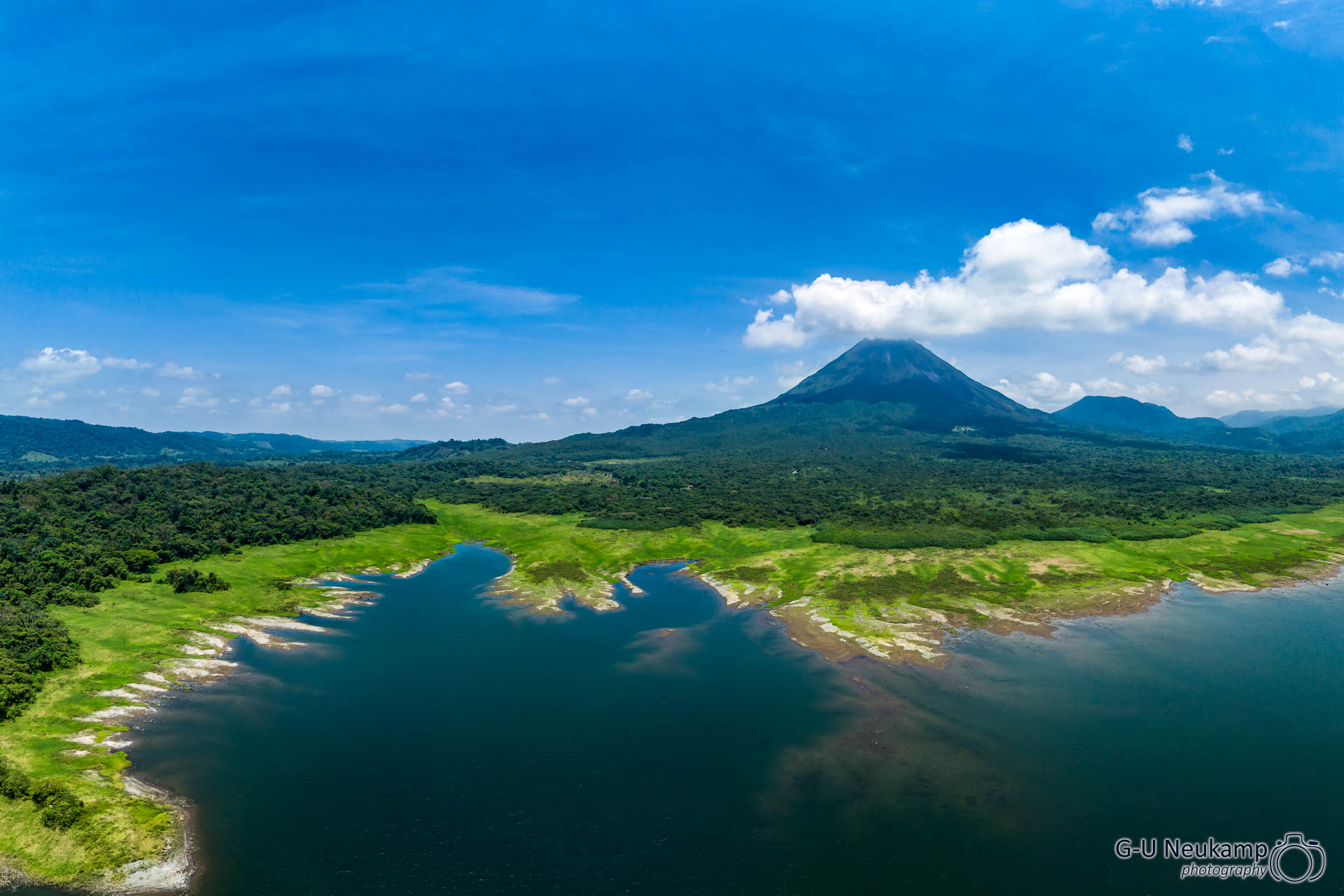
As the heat continued to rise, we drove back to the lodge and enjoyed the afternoon in our casita in the Jacuzzi with a cold beer. We met up again in the late afternoon and decided to drive to Lake Arenal again to enjoy the sunset while the weather was still good. This time it was really worth it:


For our last dinner at the Jaranita bar in Amor Arenal, we had reserved a table with a built-in charcoal grill. Beforehand, we enjoyed another ‘Agua de Sapo’, the delicious cocktail from the previous evening. Then we had delicious steaks and the local chorizo sausages (not as spicy as the Spanish ones) and local side dishes (including cooking bananas and coconut rice, very tasty).
It was a crowning finale to our time at the exclusive Amor Arenal Lodge. Tomorrow we continue on to Monteverde.
